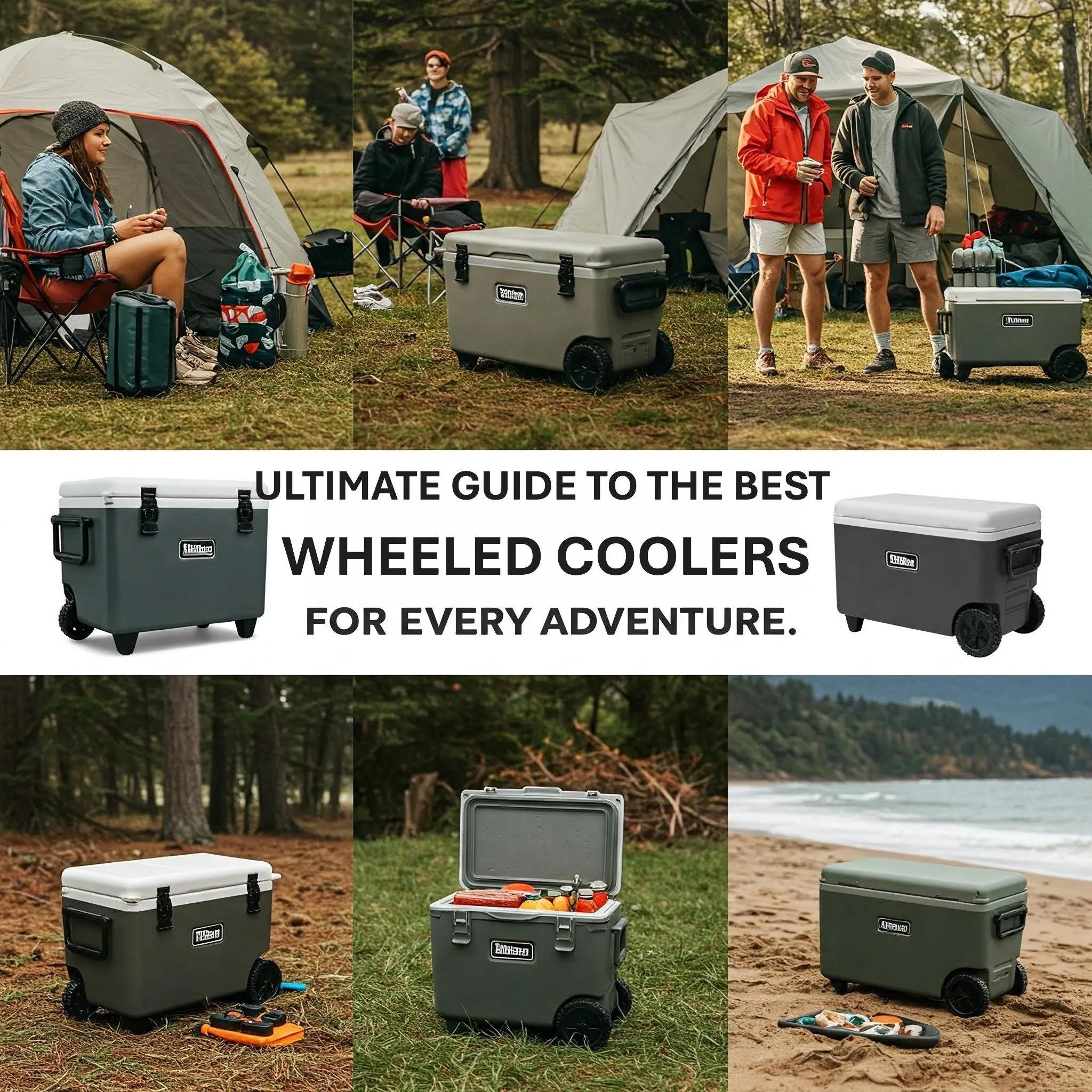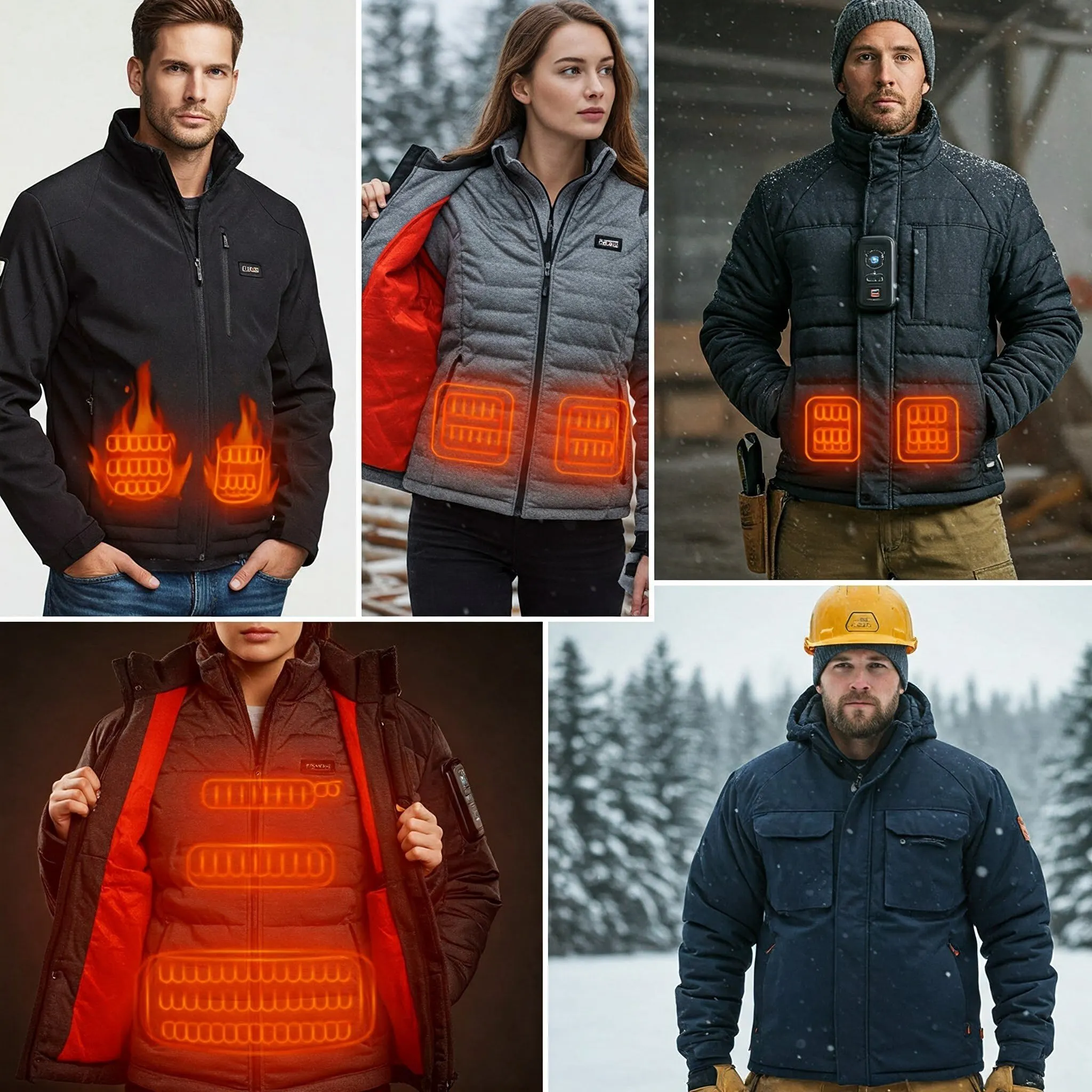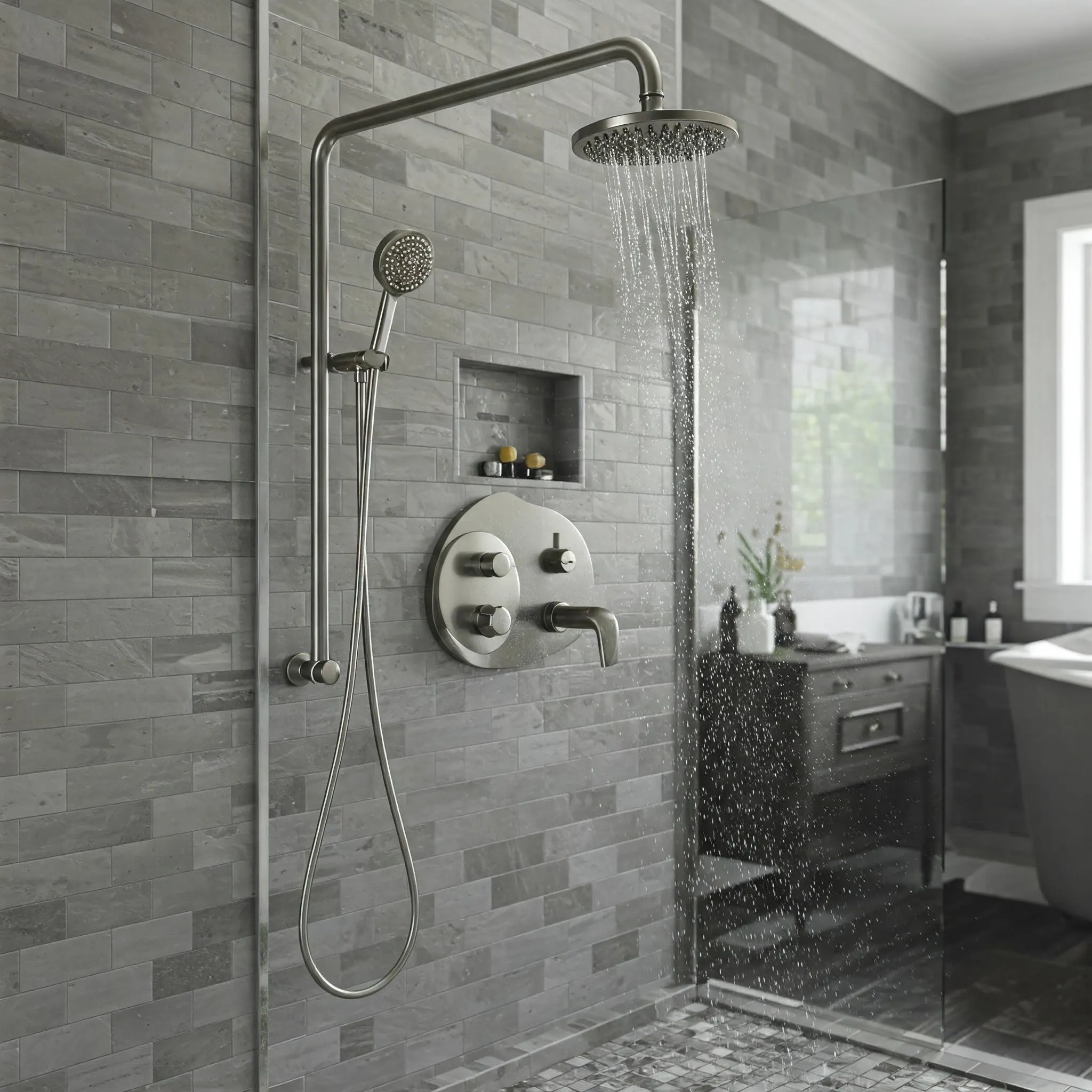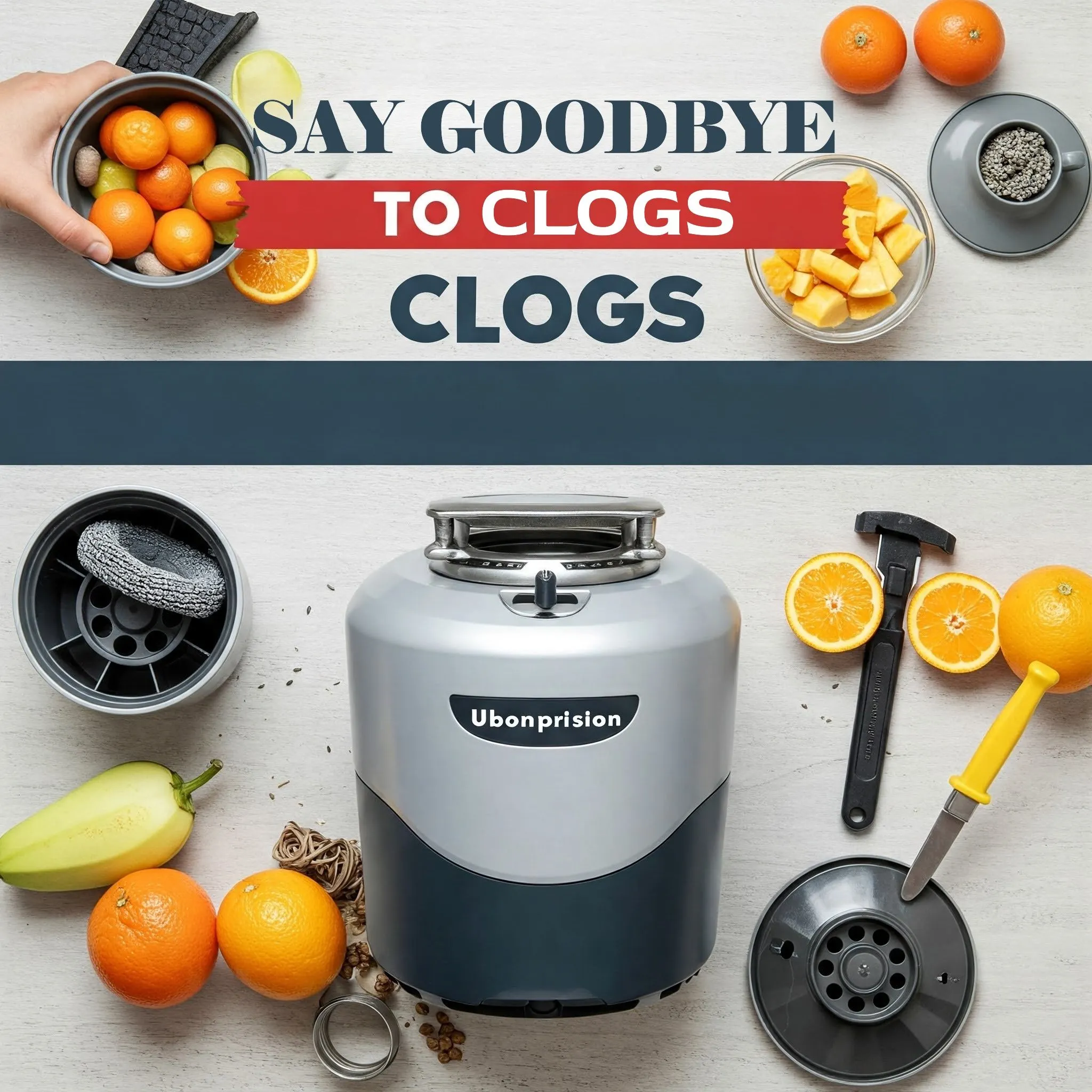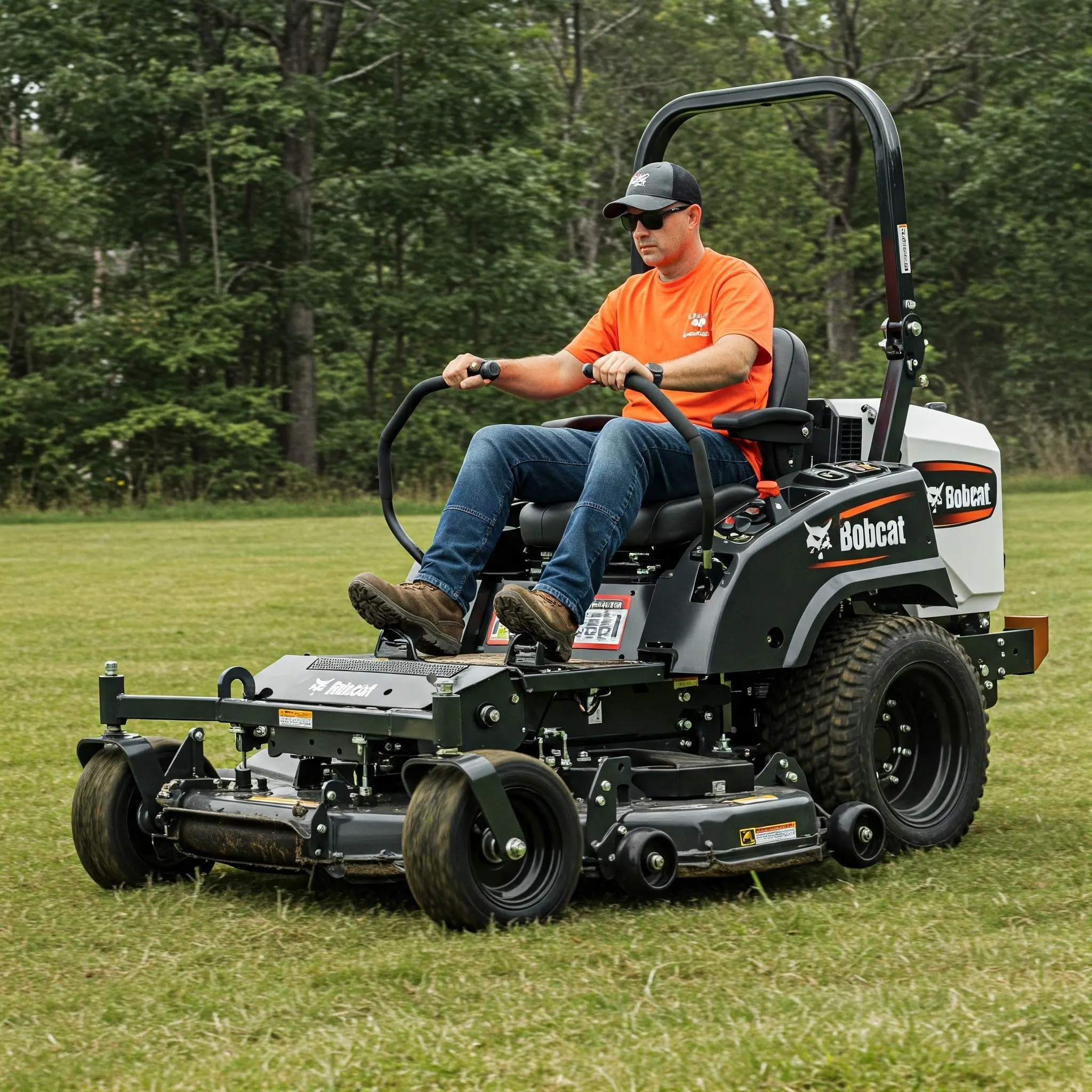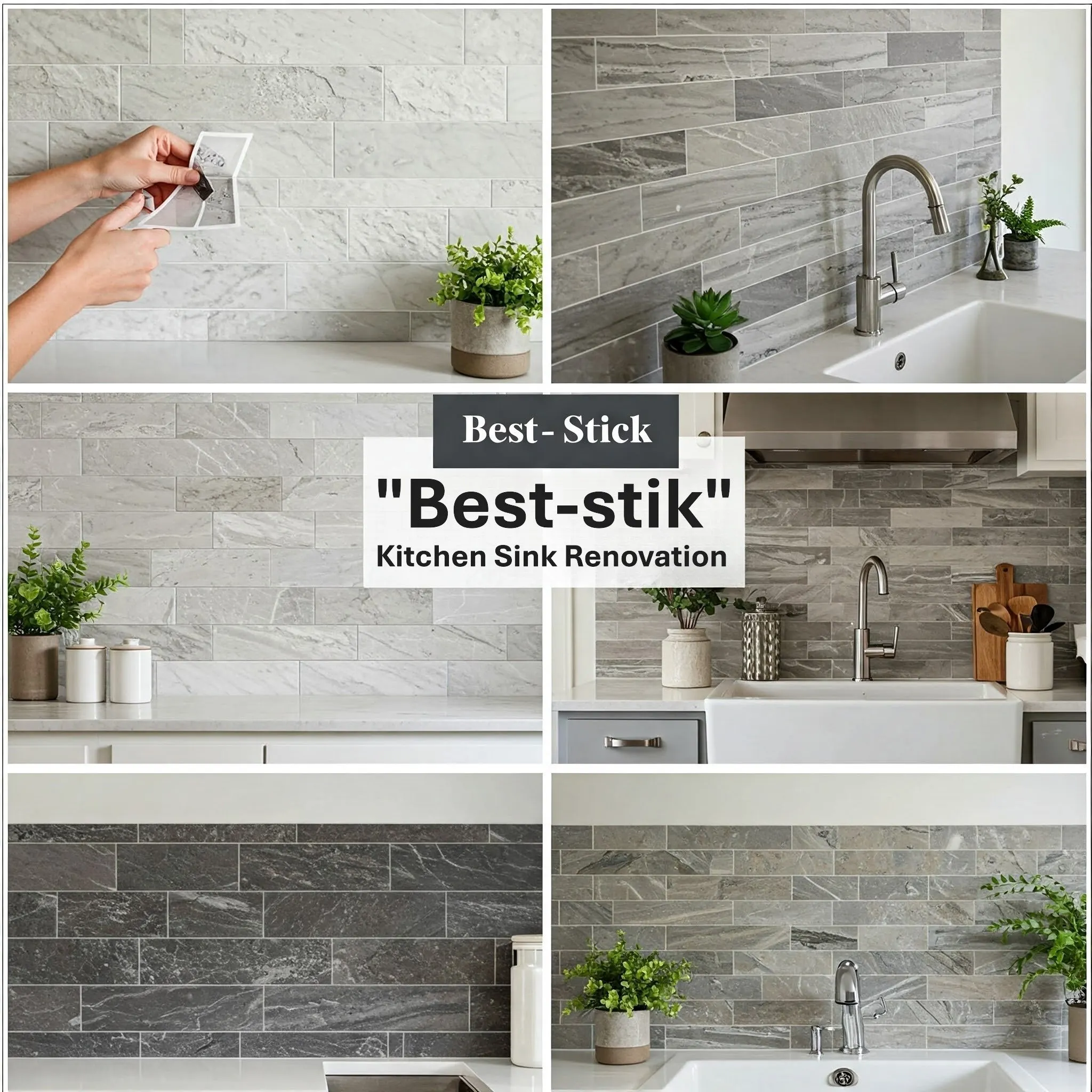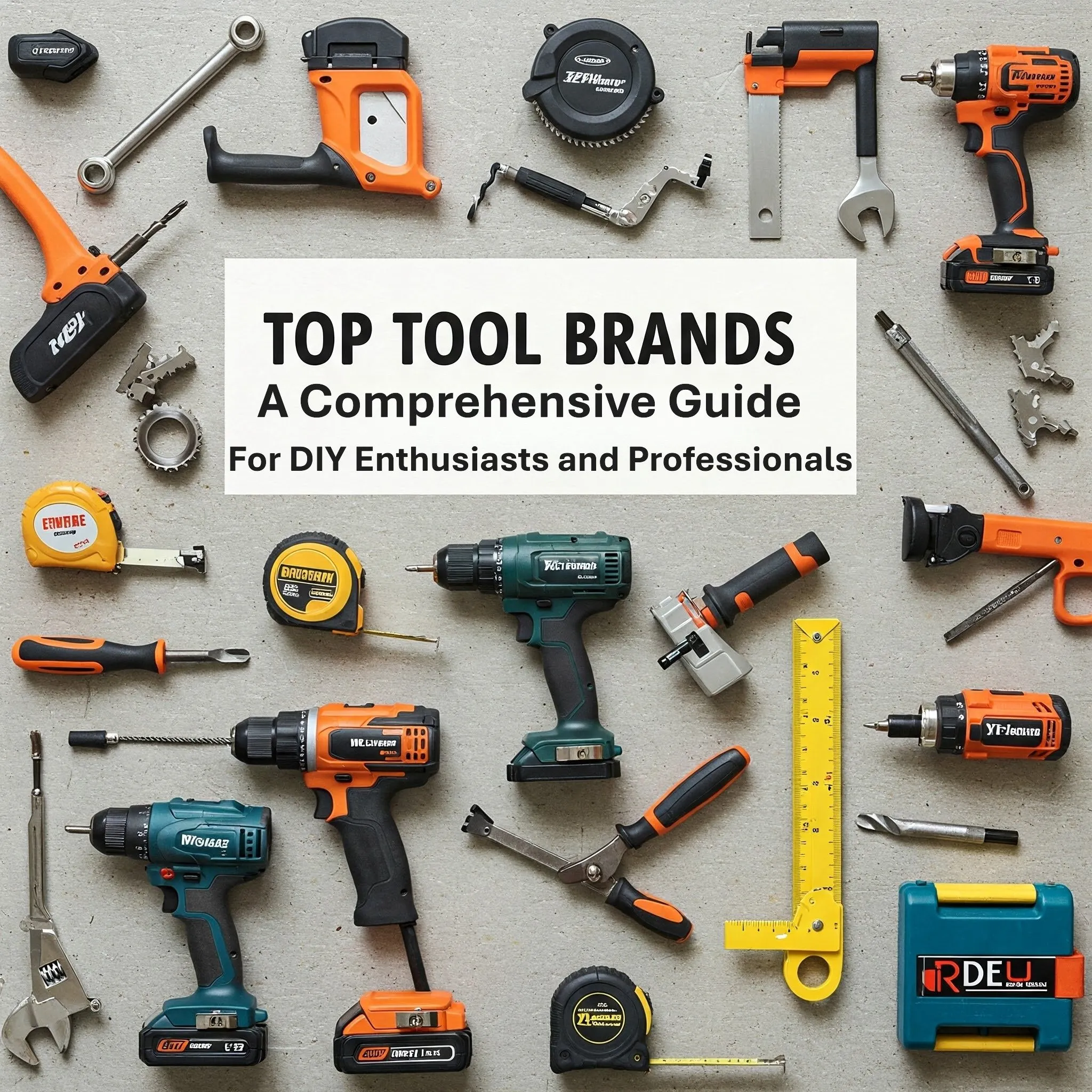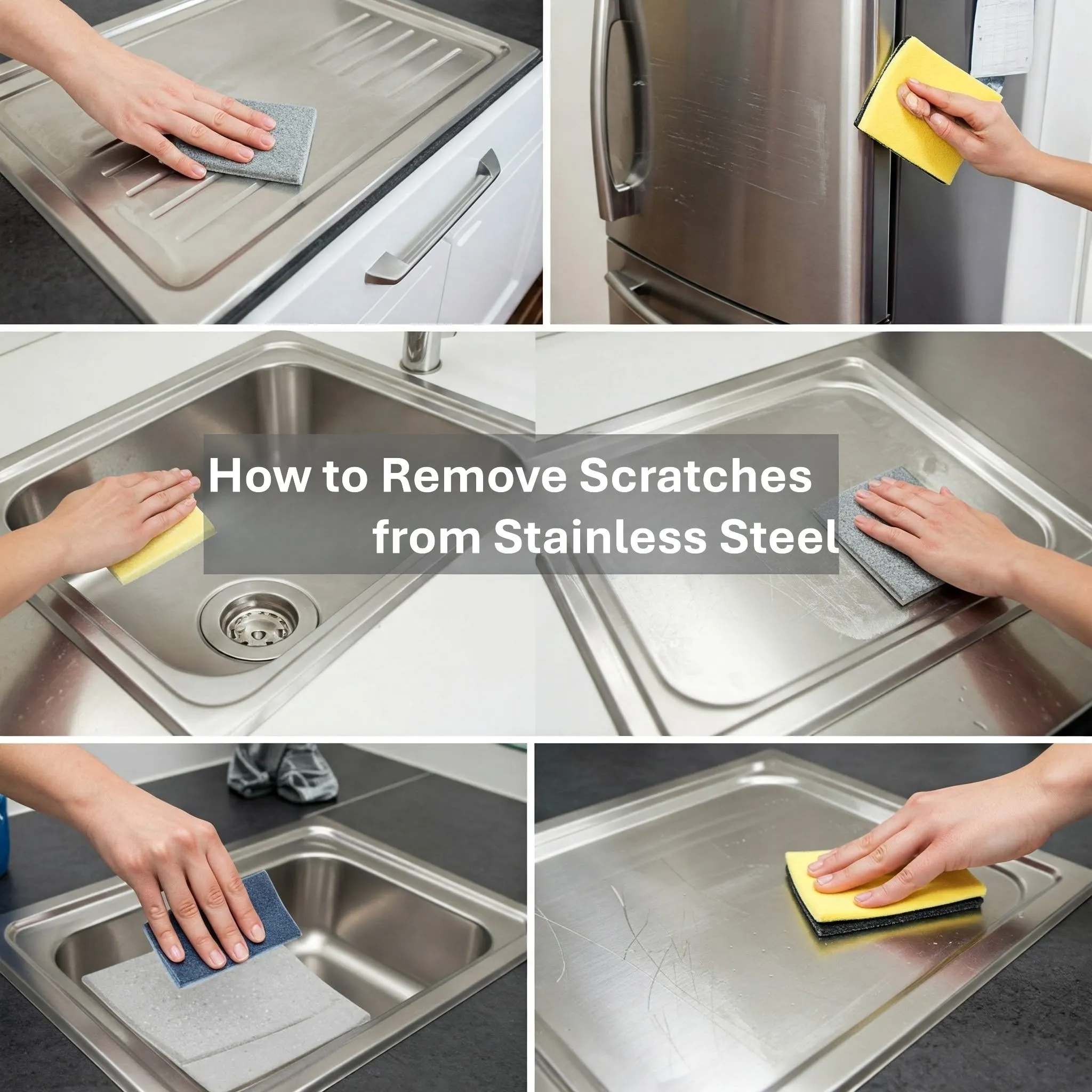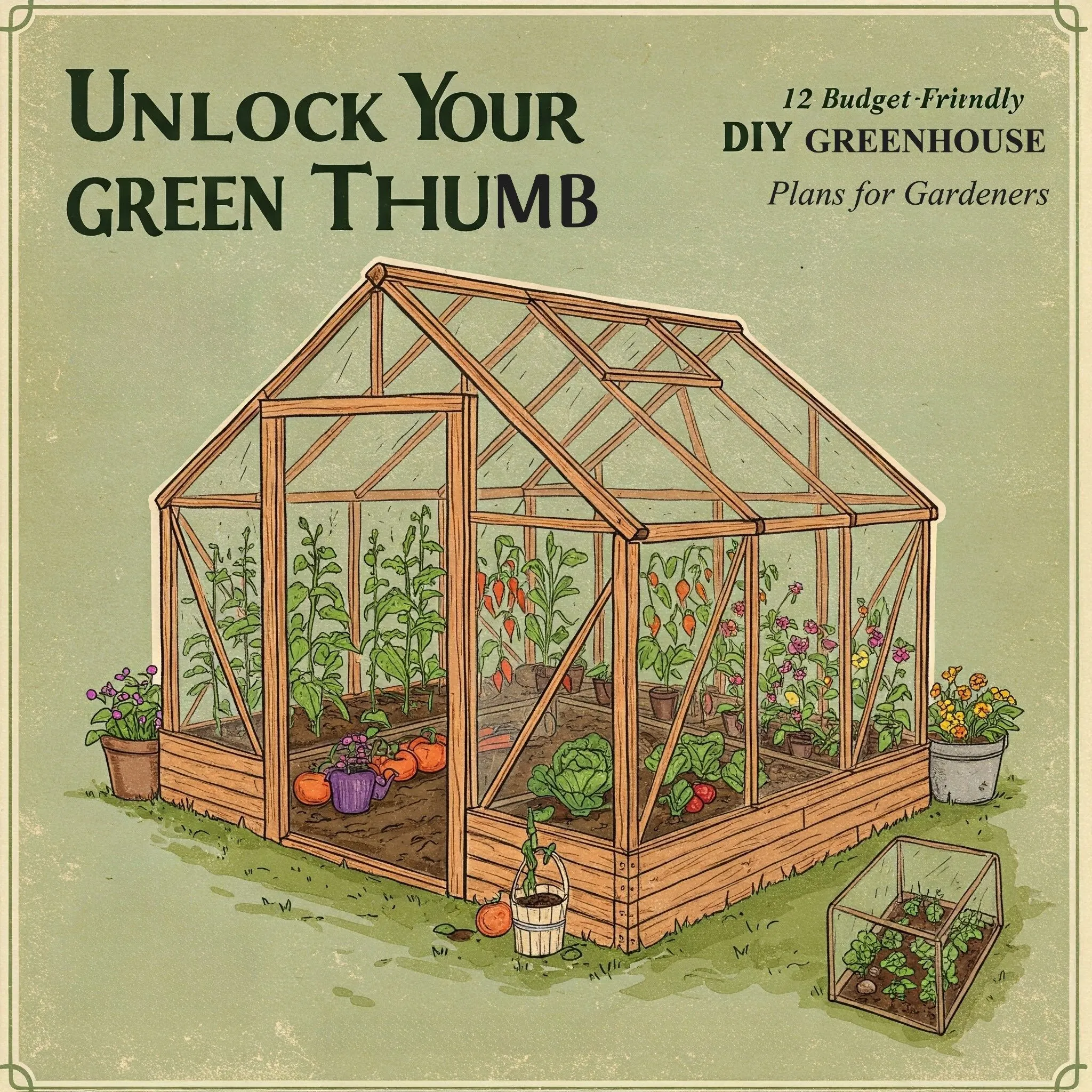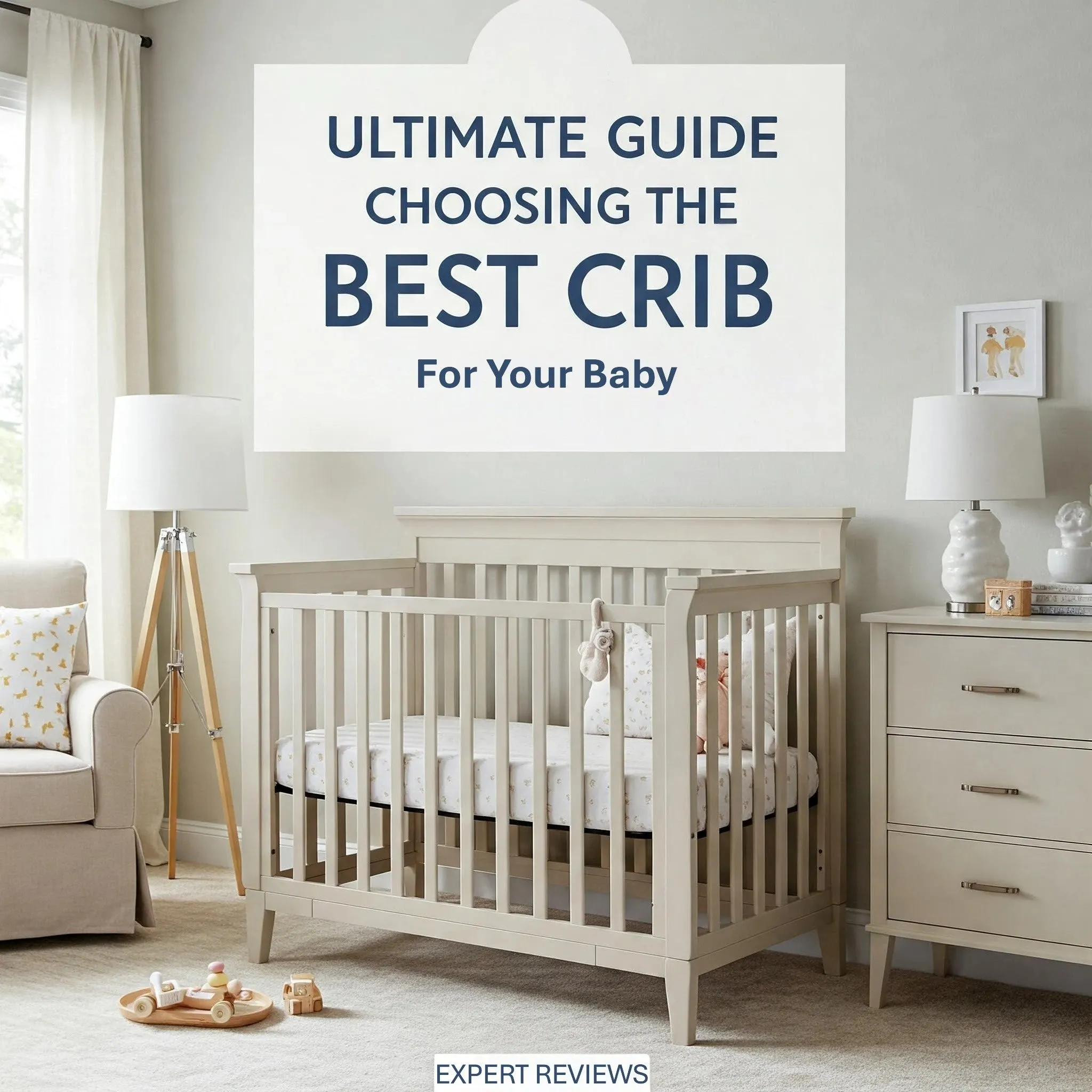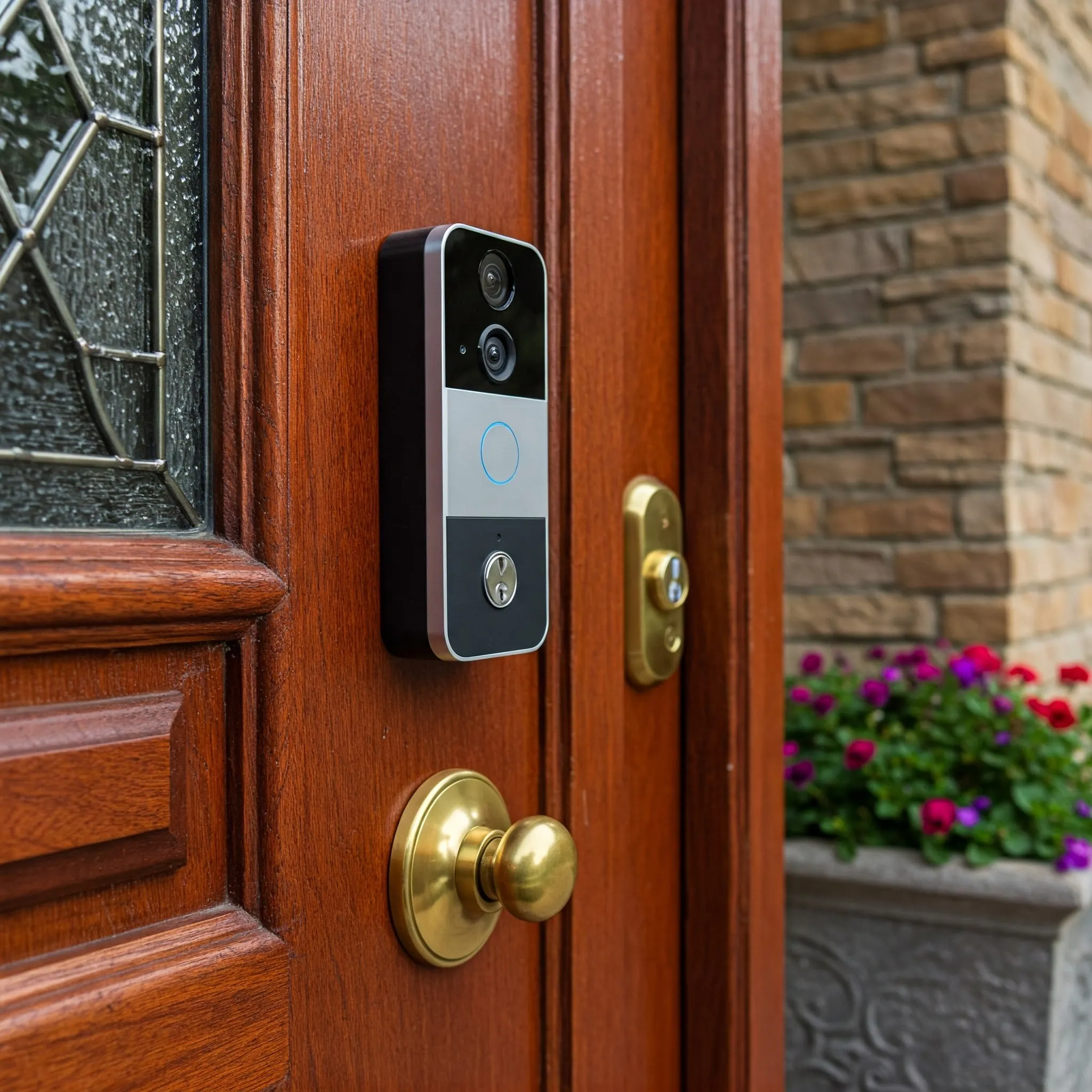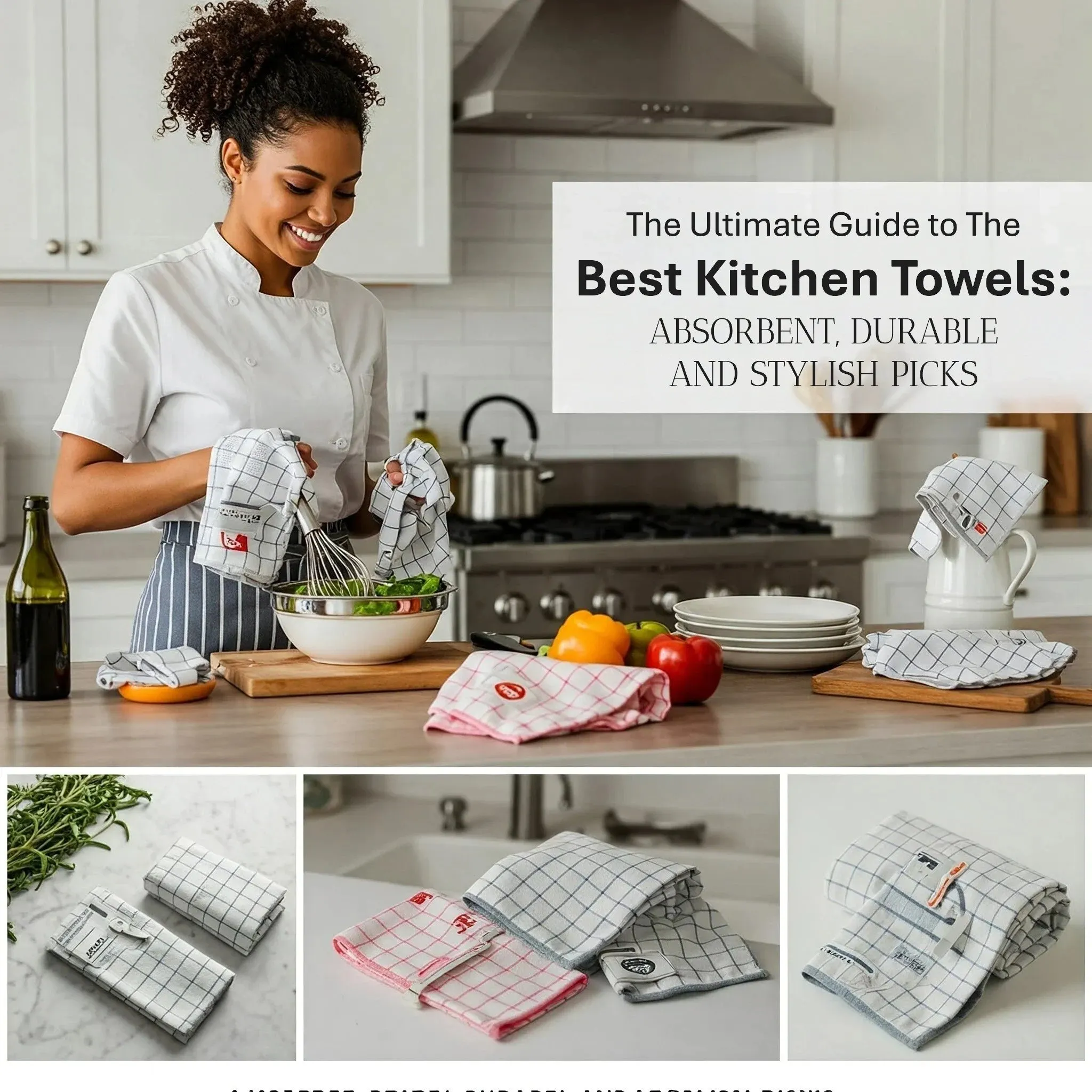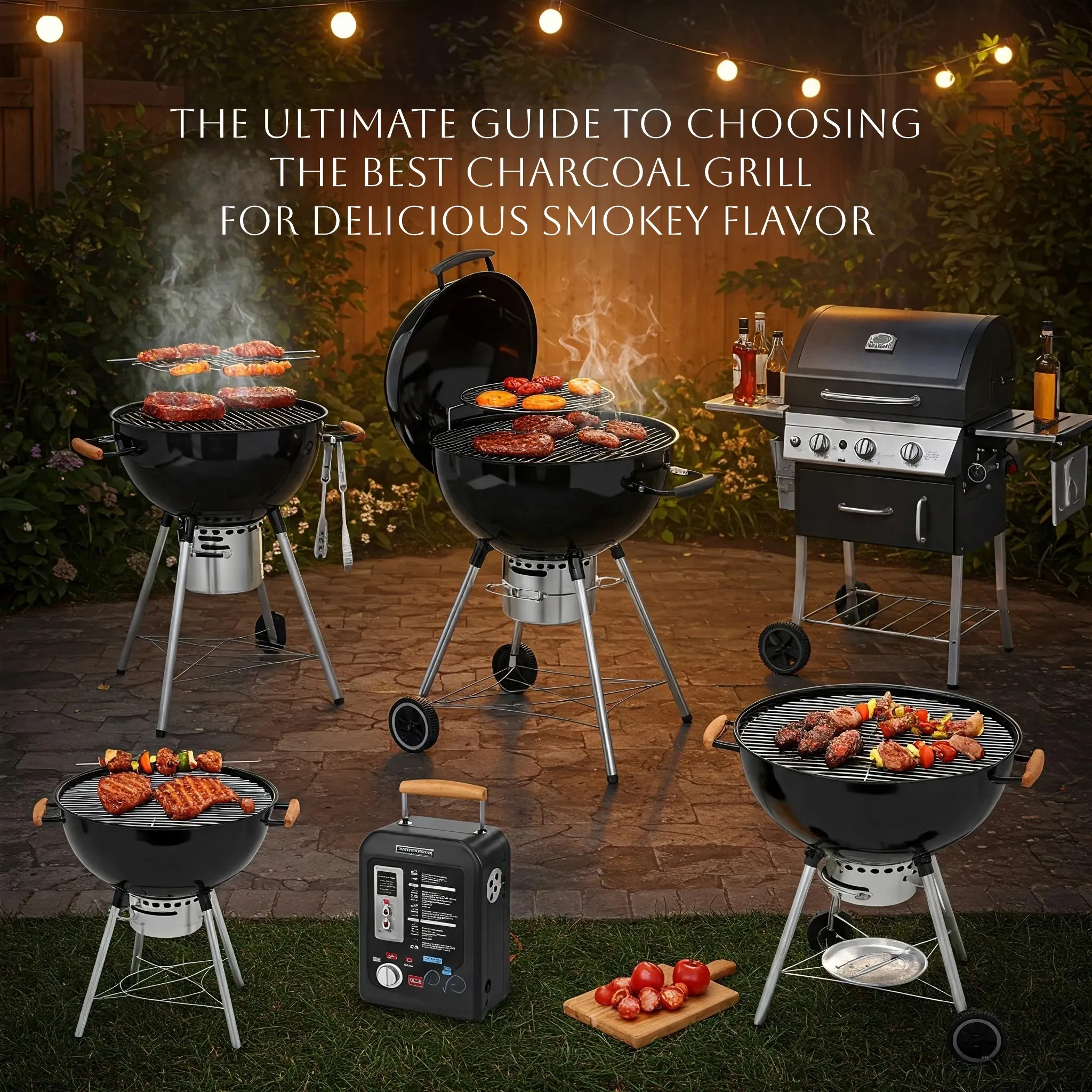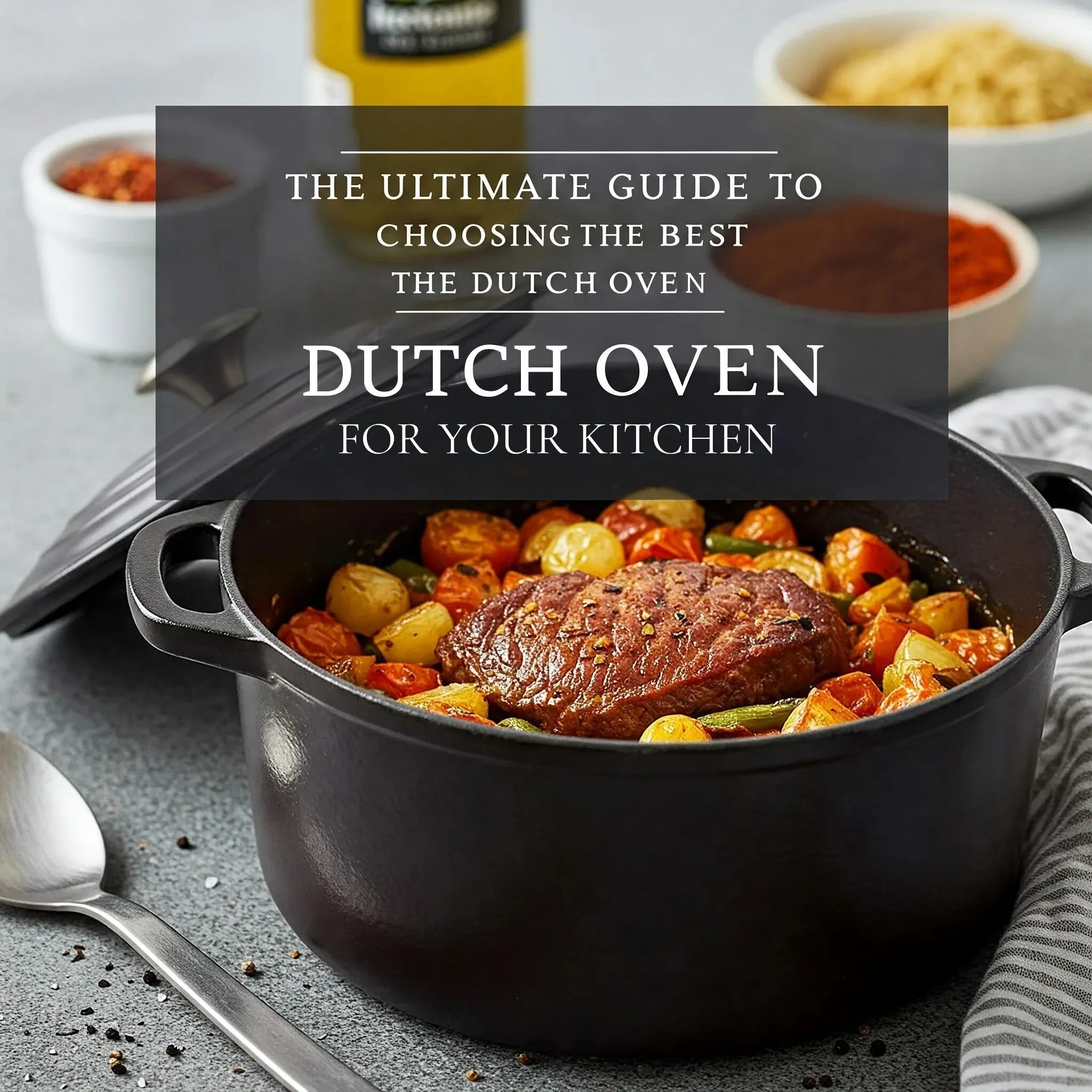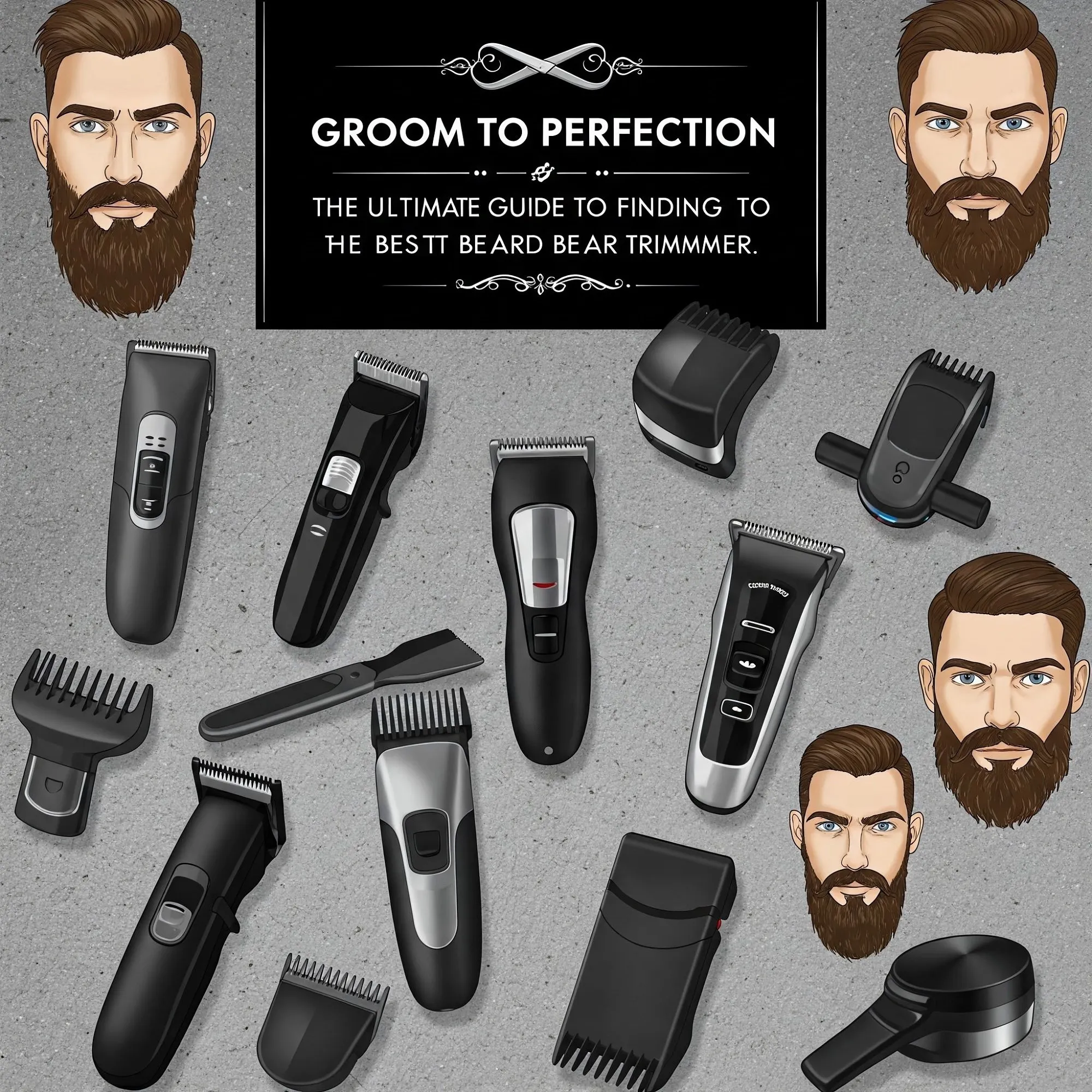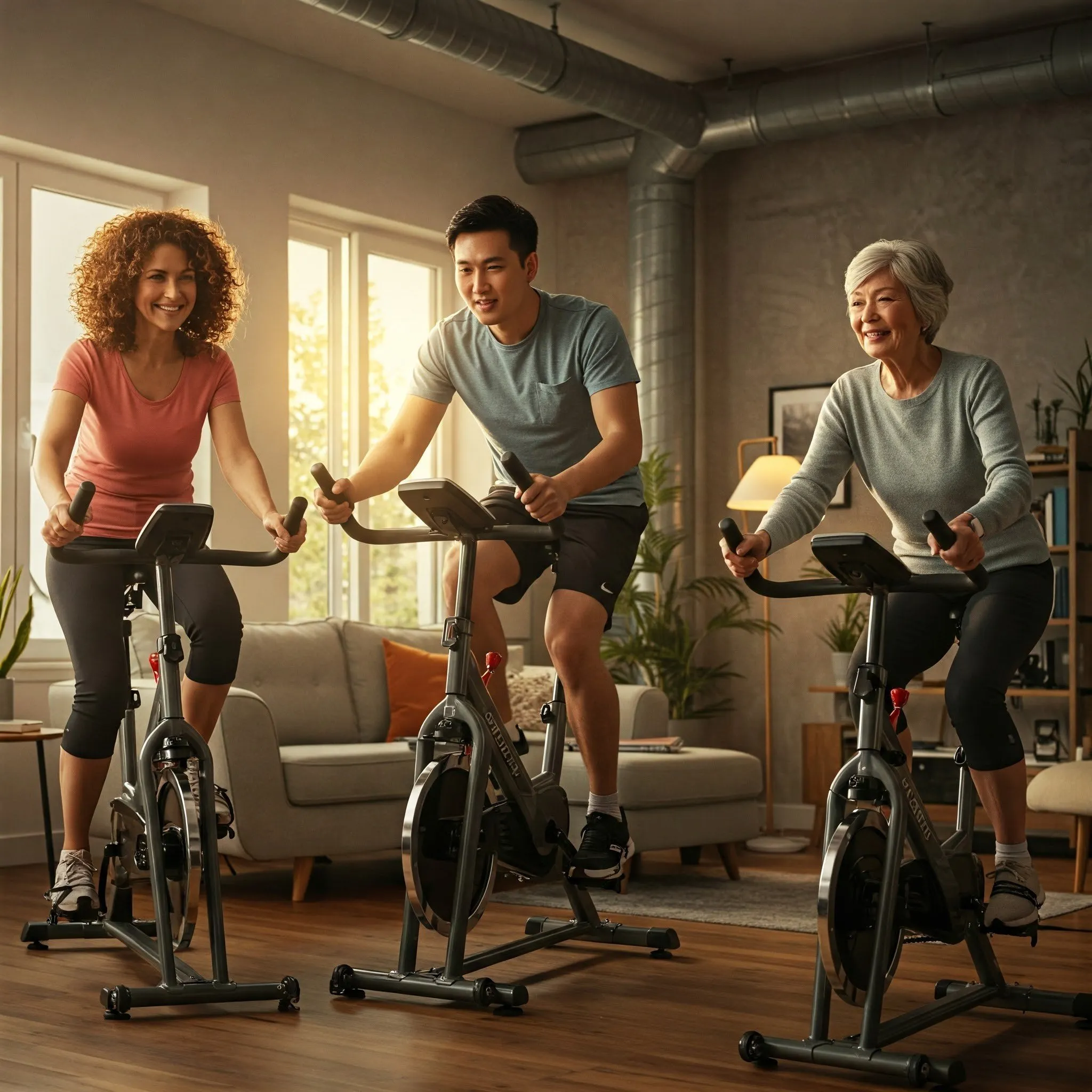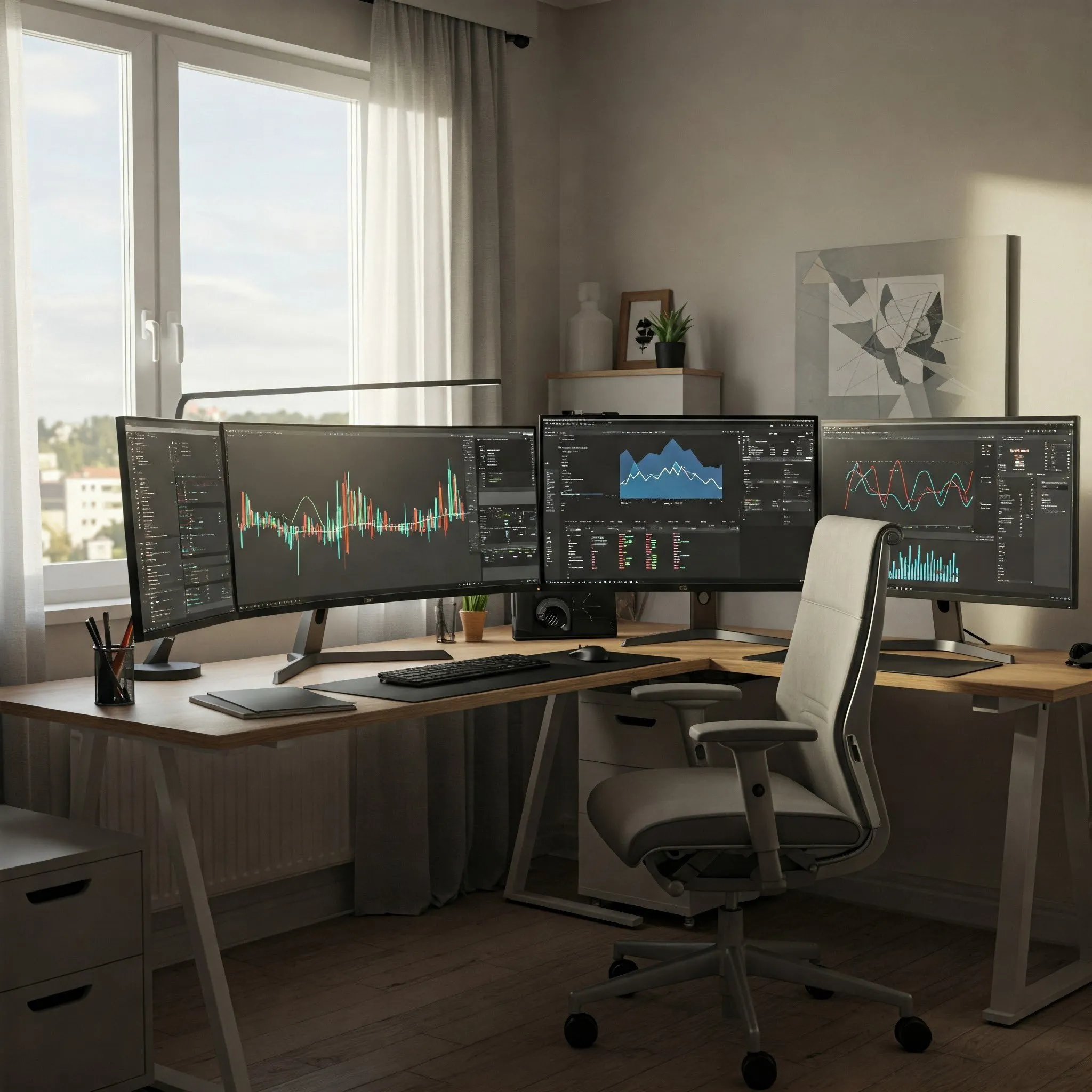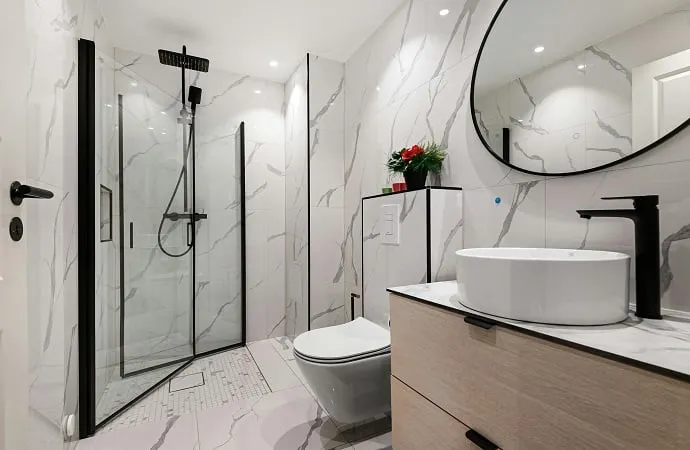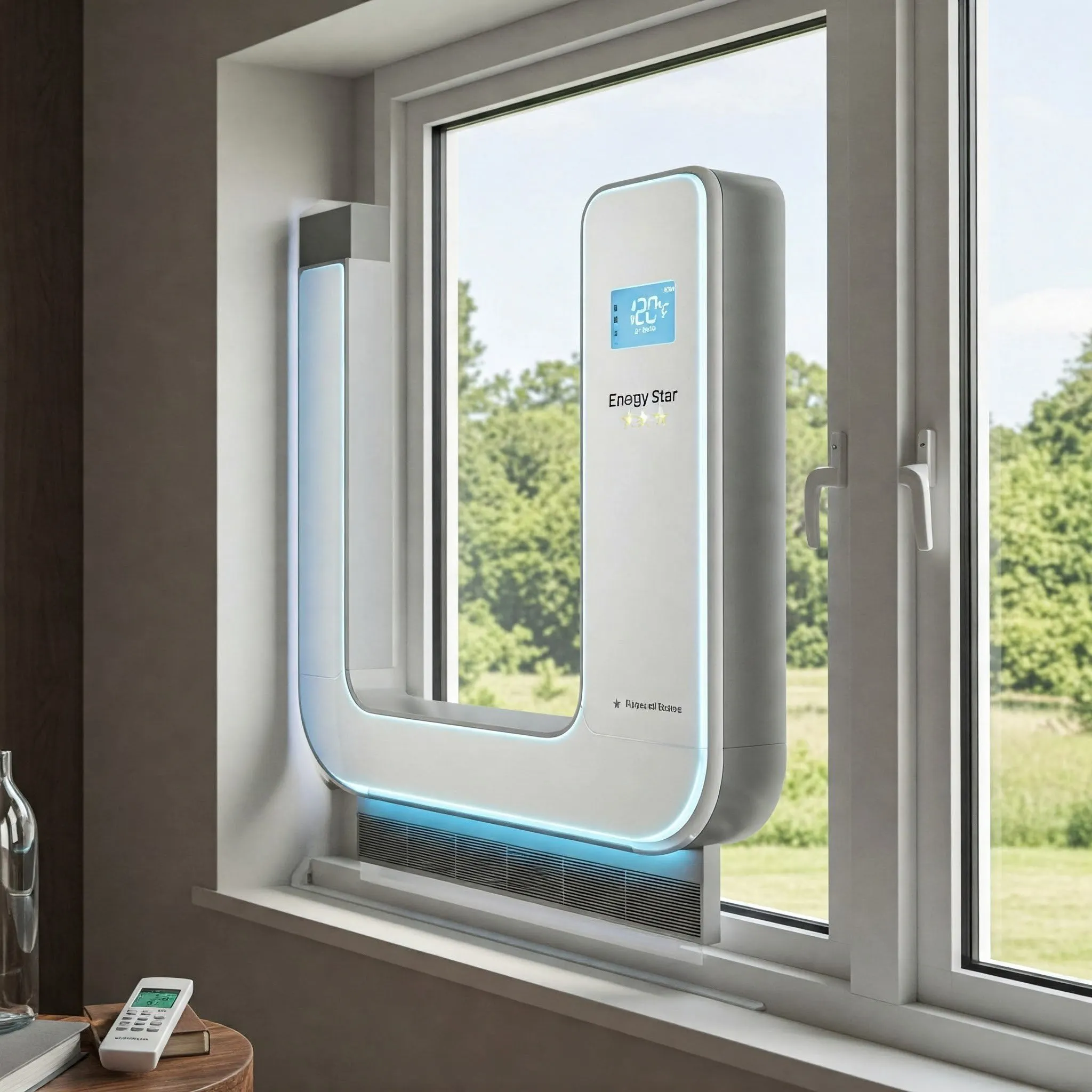The Ultimate Guide to Choosing the Best Charcoal Grill for Delicious Smoky Flavor
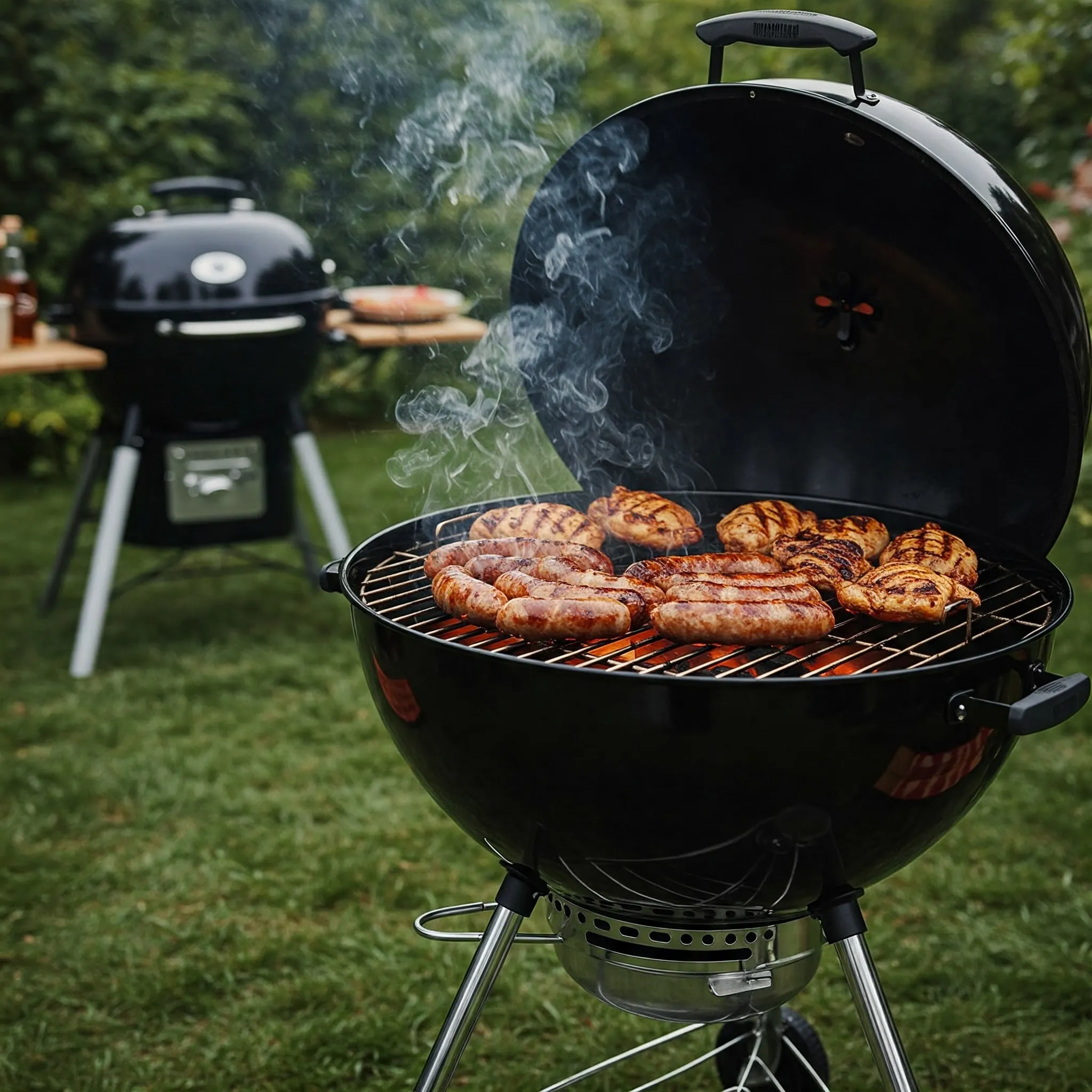
"Please be advised that we may receive compensation from the products featured on this page, and we participate in affiliate programs. Learn More ›"
The allure of charcoal grilling lies in its ability to impart a smoky, irresistible flavor to food that gas grills simply can't replicate. While it demands a touch more patience and attention, the reward is a culinary experience that elevates your backyard barbecues. After dedicating extensive time and effort to rigorously testing a range of charcoal grills, cooking over forty pounds of everything from juicy burgers and tender barbecue chicken to perfectly roasted whole chickens, our top recommendation emerges as the Weber Original Kettle Premium Charcoal Grill 22″. This iconic grill, refined over seven decades by the renowned brand Weber, stands out as the most versatile, user-friendly, and consistently high-performing charcoal grill we've encountered.
The Weber Original Kettle Premium Charcoal Grill 22″ has earned its classic status for good reason. Its design is both compact and spacious enough to handle a diverse array of cooking tasks, from searing a dozen mouthwatering burgers for a crowd to slow-cooking an entire Thanksgiving turkey. In our comprehensive testing, this grill effortlessly produced beautifully cooked meals, including perfectly seared burgers, a flavorful cut-up barbecue chicken, a moist and tender whole chicken, and a rack of wood-smoked baby-back ribs that were nothing short of exceptional. Remarkably, achieving these results required minimal effort and no specialized grilling expertise. While the fundamental design, a hallmark of Weber, has remained largely unchanged since 1952, Weber has thoughtfully incorporated practical enhancements over the years, such as convenient hooks on the side handles for keeping your grilling tools within easy reach. What truly distinguishes the Premium version of this Weber kettle from the standard 22-inch model is the inclusion of an enclosed ash catcher, a brilliant addition that eliminates the mess and potential hazard of stray embers, making cleanup a breeze. Furthermore, assembling this Weber grill is incredibly straightforward, and its construction and materials exude durability. Coupled with Weber's solid warranty and well-regarded customer service, the Weber Kettle Premium Grill presents an unparalleled value proposition for any grilling enthusiast.
While the Weber Original Kettle Premium Charcoal Grill 22″ emerged as our top pick, we also put other notable contenders through their paces. The Napoleon Rodeo Charcoal Kettle Grill (NK22CK-L), from the esteemed brand Napoleon, presented itself as a strong competitor, often considered one of the better alternatives to the classic Weber design. We also explored the unique capabilities of the PK Grill & Smoker, a high-quality charcoal grill with a distinct rectangular design, acknowledging that its non-kettle form factor might offer advantages in certain grilling scenarios. Lastly, we briefly considered the Char-Griller Wrangler E2123, but concerns raised in user reviews regarding potential safety and durability issues led us to focus our primary testing efforts on the Weber, Napoleon, and PK Grill. Our goal at ClixNest is to provide you with the most reliable and informative reviews, helping you make the best choice for your grilling needs.
====================================================================
Why You Should Trust Our Expert Grilling Reviews

At ClixNest, we understand that choosing the right grill is an investment, and you deserve to have confidence in our recommendations. Our testing process is meticulously designed and executed by experienced professionals who are passionate about grilling. The core of our testing was led by a ClixNest staff writer with over a decade of experience working in professional kitchens, many of those years spent mastering the art of grilling. This hands-on experience in high-pressure culinary environments provides an invaluable foundation for evaluating the performance and usability of different grills.
Our testing wasn't a solitary endeavor. The lead tester was supported by other members of our team who joined in the cooking and evaluation process, bringing diverse perspectives and ensuring a comprehensive assessment. Beyond our internal expertise, we also consulted with more than a dozen industry experts, including seasoned grill masters, manufacturers, and grilling enthusiasts. These conversations provided valuable insights into the design, functionality, and real-world performance of the grills we tested. Our commitment to thoroughness extends beyond just cooking; we back up our findings with comprehensive research into the materials, construction, and customer feedback for each grill. This combination of hands-on testing and expert consultation ensures that our recommendations are well-informed, unbiased, and tailored to provide you with the most accurate information. You can trust ClixNest to deliver honest and reliable reviews to help you make the best grilling decision.
====================================================================
How We Picked the Contenders for the Best Charcoal Grill
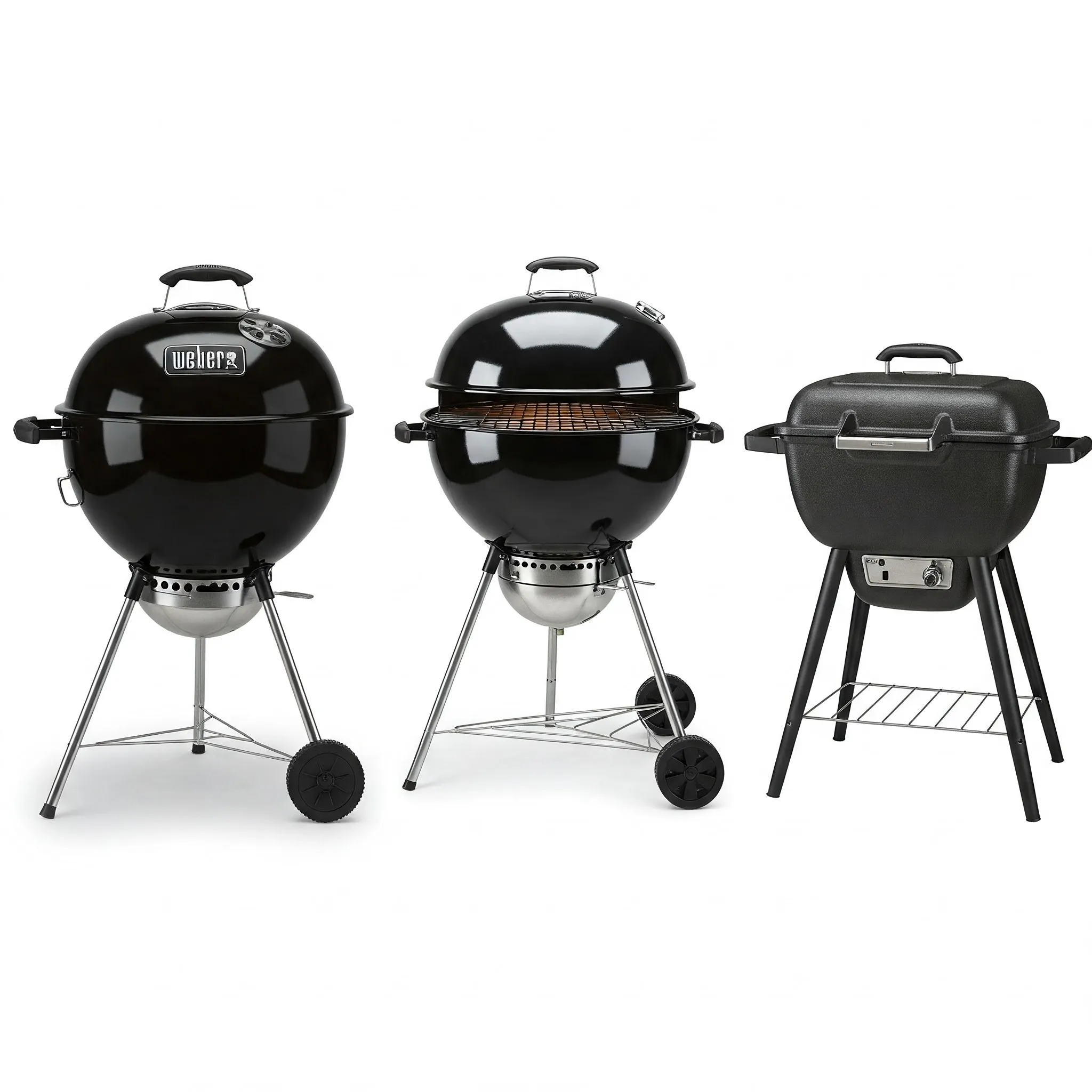
Our selection process for the best charcoal grill began with the undeniable icon of the charcoal grilling world: the Weber kettle. The Weber kettle, particularly the Weber Original Kettle Premium Charcoal Grill 22″, has dominated the charcoal grilling landscape for decades, and for good reason. Its reputation for durability, versatility, and consistent performance is unmatched. It has also inspired countless imitations, many of which are cheaply made knockoffs that fail to deliver the same grilling experience and ultimately aren't worth the minimal cost savings.
Knowing the Weber kettle would be the benchmark, we sought out a kettle-style grill that could genuinely compete with it in terms of performance, price, and overall value. This led us to the Napoleon Rodeo Charcoal Kettle Grill, specifically an earlier version of the current Napoleon 22″ Charcoal Kettle Grill.
Napoleon is a well-respected brand known for producing high-quality grilling equipment, and the Rodeo model offered a compelling alternative to the Weber. We also recognized that kettle grills, while popular and versatile, might not be the only design worth considering. Therefore, we decided to include the popular PK Grill & Smoker in our testing. The PK Grill, with its distinctive cast-aluminum body and rectangular shape, represents a different approach to charcoal grilling and boasts a loyal following. We wanted to explore whether these design differences offered any significant advantages over the traditional kettle design.
Material considerations played a role in our selection, although perhaps less than one might think for kettle-style grills. Most kettle grills, including the Weber and Napoleon, are constructed from thin carbon steel coated with porcelain, a combination that offers a good balance of heat retention and durability for a reasonable lifespan. The PK Grill, however, stands out with its cast-aluminum body, a material more commonly found in high-end gas grills and known for its excellent heat retention and rust resistance. While grates are available in various materials, the models we tested all happened to feature thin wire grates, and surprisingly, they all performed adequately in our tests without any significant issues with food sticking.
Beyond the core cooking performance, we also considered other aspects of the user experience, such as the effectiveness of the vent control mechanisms and the ease of assembly for each grill. Unless it was unavoidable (as with the PK Grill, which only comes with a cart), we opted to test versions of these grills without built-in carts or side tables. These features can add unnecessary bulk and cost to a type of grill often chosen for its compact size and affordability. Finally, we made a conscious decision to exclude kamado-style grills and pellet grill-smokers from this particular guide. While these designs offer attractive versatility, they also tend to be significantly more expensive, and kamado grills, in particular, can have a steeper learning curve. Additionally, wood pellets, while excellent for smoking, simply don't produce the intense direct heat required for achieving a perfect sear on burgers or steaks, which was a key aspect of our testing.
====================================================================
Our Rigorous Testing Methodology: Putting Charcoal Grills to the Test
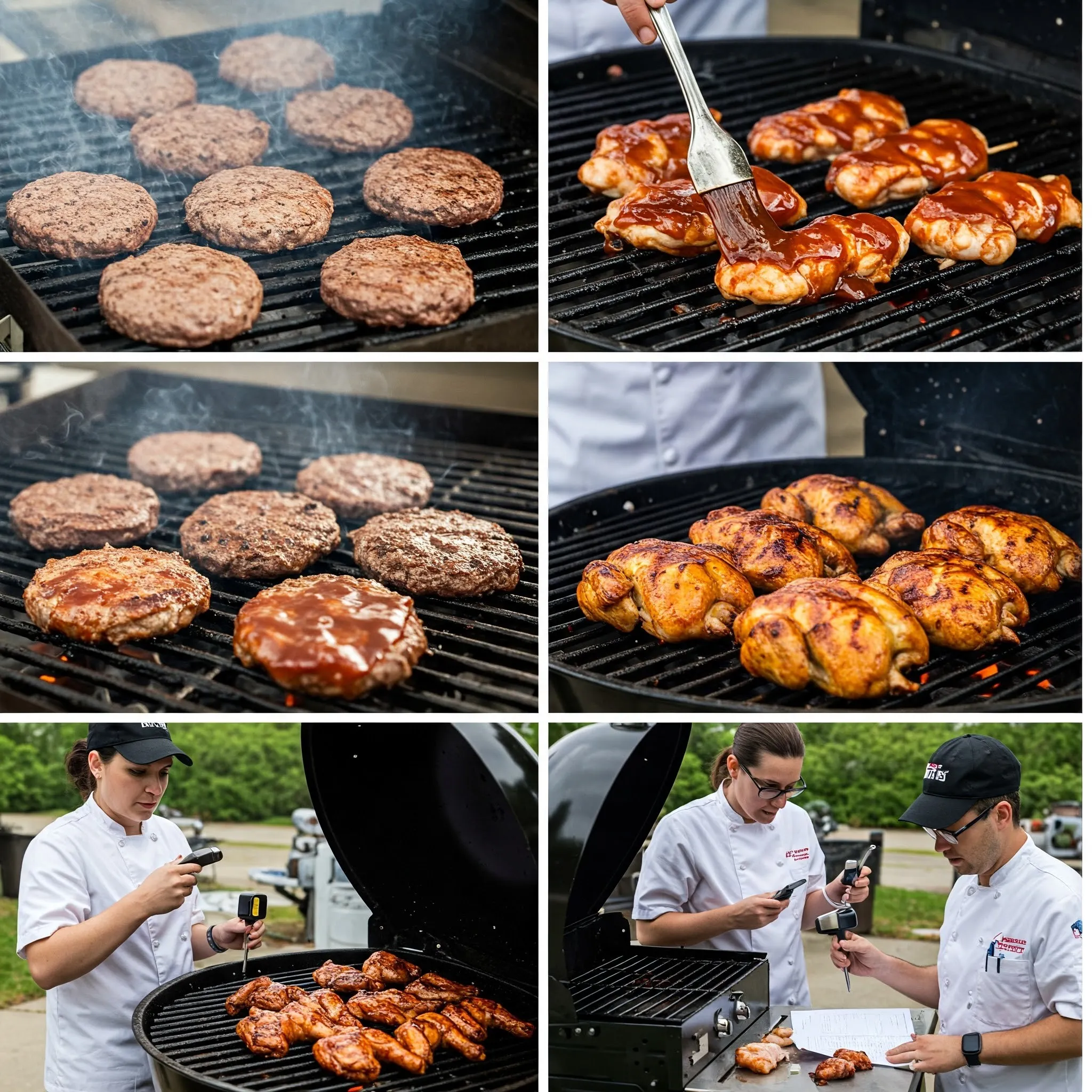
To determine the best charcoal grill, we subjected our chosen contenders – the Weber Original Kettle Premium Charcoal Grill 22″, the Napoleon Rodeo Charcoal Kettle Grill, and the PK Grill & Smoker – to a comprehensive battery of cooking tasks designed to evaluate their performance across various grilling scenarios.
Our testing began with the burger test, a crucial assessment of each grill's ability to achieve a high-heat sear. We started by lighting a standard chimney full of charcoal briquets and then evenly distributing the lit coals across the charcoal grate of each grill. Following standard manufacturer recommendations, we heated the grills with the lids closed and all vents fully open for 15 minutes to reach optimal grilling temperature. We then oiled the grates to prevent sticking and carefully placed six-ounce burger patties across the entire cooking surface of each grill, ensuring not to overcrowd them. Throughout the cooking process, we closely monitored for any undesirable flare-ups and paid attention to the evenness of cooking across different areas of the grate.
Next, we moved on to the low-and-slow chicken test, designed to evaluate each grill's ability to maintain a consistent low temperature for indirect cooking and produce moist, flavorful results. We allowed the same batch of coals used in the burger test to burn down to the white-ash stage with the lid open, which took approximately 20 minutes. We then re-oiled the grates and placed a whole cut-up chicken – two breasts, two thighs, two drumsticks, and two wings – skin side down on each grill. We closed the lids for 45 minutes, occasionally checking for any excessive charring and redistributing the chicken pieces as needed to ensure even cooking. We monitored the internal temperature of the grills using the built-in thermometer where available and a separate probe thermometer where not, adjusting the vents as necessary to maintain a consistent temperature. After 45 minutes, we flipped the chicken pieces and began applying barbecue sauce every five minutes until the total cook time reached one hour. Finally, we conducted a taste test, paying particular attention to the moisture content of the breast meat.
Our final cooking challenge was the whole-chicken test, specifically designed to assess each grill's indirect cooking capabilities for larger items. We moved the remaining coals to one side of the coal grate in each grill and added half a chimney's worth of freshly lit coals to maintain a consistent heat source. Our goal was to bring the internal temperature of the grills as close to 500 °F as possible, mimicking the high-heat oven-roasting method popularized by Barbara Kafka. We then placed a 3- to 4-pound whole chicken in each grill, positioning it as far away from the direct heat of the coals as possible. We placed the lid on, ensuring the vent was positioned directly above the chicken to facilitate the circulation of smoke and hot air around the bird. After one hour of cooking, we removed the chickens and noted the depth and evenness of browning. Finally, we conducted a taste test to evaluate the overall flavor and tenderness of the cooked chicken.
Beyond these core cooking tests, we also took the opportunity to test a variety of grilling accessories, such as spatulas, tongs, grill brushes, and sheet pans, identifying our favorite tools for the job. This hands-on experience with accessories also helped us uncover some of the subtle design strengths and flaws of the grills themselves. During the assembly process for each grill, we paid close attention to the clarity of the instructions, checked for any missing parts, and noted any dangerously sharp edges that could pose a safety hazard. Finally, after all our cooking tests were completed, we performed routine maintenance on each grill, including emptying the ash catchers, thoroughly brushing the grates, and washing out the interiors. This allowed us to assess the ease of cleaning and long-term usability of each model.
====================================================================
Our Top Pick: The Weber Original Kettle Premium Charcoal Grill 22″ – A Timeless Champion
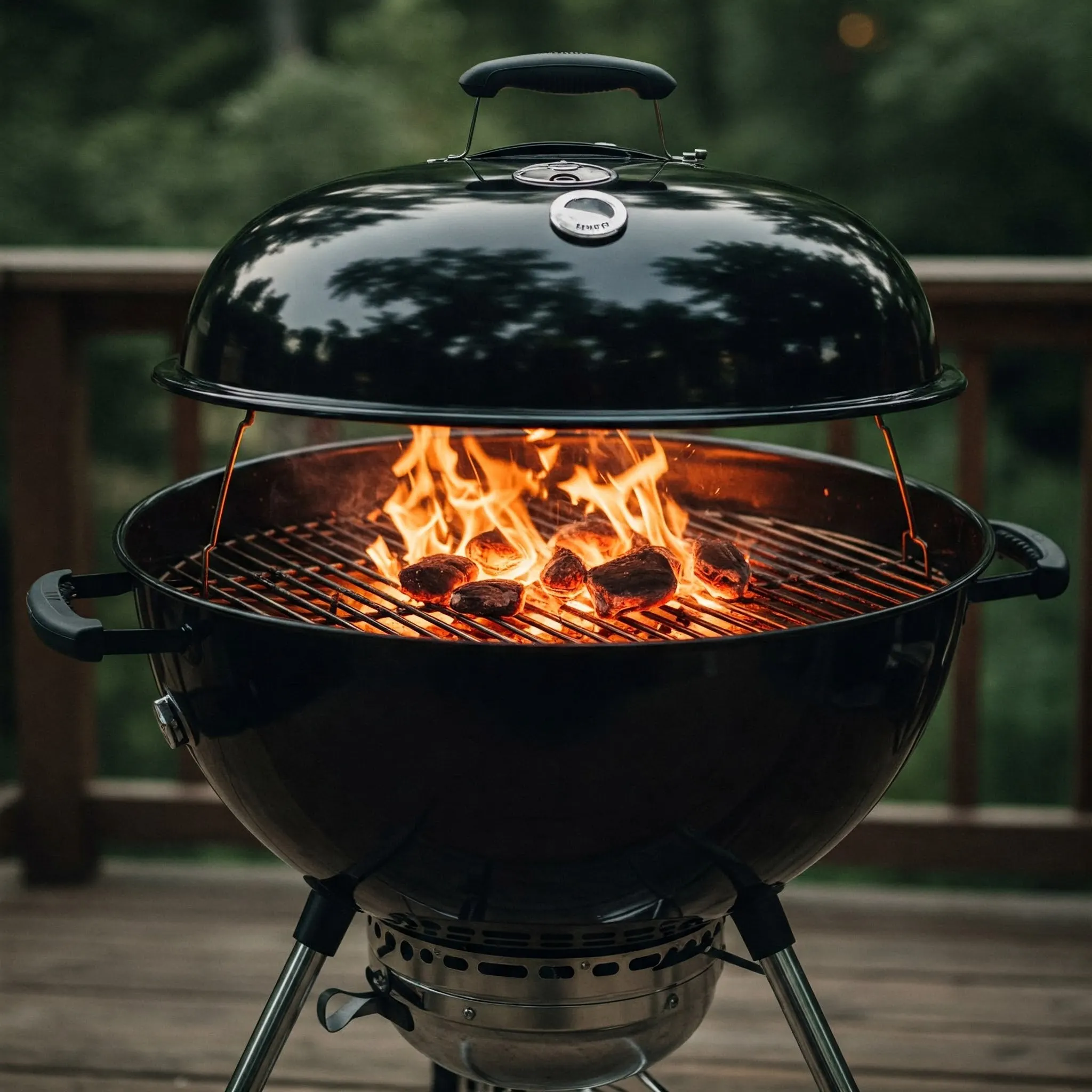
After our extensive testing, the Weber Original Kettle Premium Charcoal Grill 22″ emerged as the clear winner. It consistently outperformed the other grills in terms of cooking performance, ease of assembly, and thoughtful, user-friendly details. None of the other models we tested managed to deliver consistently excellent results across all our grilling challenges in the same way that the Weber kettle did.
The construction of the Weber Original Kettle Premium Charcoal Grill 22″ is remarkably simple yet incredibly solid. The materials used – rustproof aluminum for the legs, durable porcelain-coated steel for the body, and a sturdy nickel-plated steel grill grate – are all designed to withstand the rigors of regular use and last for years to come. We particularly appreciated the inclusion of convenient tool hooks on the side handles, a small but incredibly practical feature that keeps essential grilling tools within easy reach. When you factor in Weber's solid warranty and their reputation for excellent customer service, it's difficult to find a better value proposition in the world of charcoal grills.
In our cooking tests, the Weber grill consistently delivered the best and most hassle-free performance. It produced an excellent high-heat sear on a dozen hamburgers, resulting in juicy patties with a perfectly browned crust. During our low-and-slow chicken test, it crisped the skin beautifully while keeping the meat moist and tender. And in the whole-chicken test, the Weber delivered a deeply browned and thoroughly cooked bird using indirect heat, all with minimal intervention on our part. The design of the Weber Original Kettle Premium Charcoal Grill makes controlling the heat remarkably simple. The lower vents are easily adjusted with a long handle mounted above the ash box. This handle slides smoothly and remains cool to the touch, eliminating the need for gloves or a towel. The lid vent on the Weber model is a simple aluminum disc that can be easily flicked left or right to open or close the vent holes. While this top vent does get hot, a spatula or tongs can be used for adjustment. The Weber grill also comes equipped with an integrated thermometer, a useful feature for monitoring the internal temperature and getting your grill to the desired cooking heat. However, it's important to remember that charcoal temperature can fluctuate depending on wind and vent conditions, so it's always a good idea to keep an eye on your food and adjust accordingly.
The round shape of the Weber kettle offers another significant advantage: the ability to spin the grate. This allows you to easily adjust the heat exposure of your food without having to physically move the burgers, chicken, or whatever else you're grilling around the grate. In contrast, grills with rectangular grates, like the PK Grill, don't offer this flexibility, requiring you to move either the food or the coals to adjust the cooking. The Weber grill also features hinged sections on opposite sides of the grate, providing easy access to the entire charcoal bed below for adding more fuel or adjusting the coals. The Napoleon grill we tested also had hinges on opposite sides, but the PK Grill only had a single hinge, which proved to be less convenient. While all the grills we tested featured simple, thin-wire grates that performed well without any notable sticking, the overall design and functionality of the Weber's grate stood out.
Assembling the Weber grill is an incredibly simple and straightforward process. The legs and ash catcher effortlessly slot into built-in sockets and securely lock into place with user-friendly spring pins – not a single bolt or screw is required for this part. Weber even includes a simple plastic tool to help you attach the thermometer without needing a wrench. The only tools you'll need are a Phillips screwdriver to attach the side handles and a hammer (or even a piece of firewood) to tap the end caps of the wheel axle into place. One person can easily have the Weber grill unboxed and ready to cook on within minutes. This stands in stark contrast to some of the other grills we tested, which had considerably more cumbersome assembly processes.
The popularity of the Weber kettle also means it benefits from a thriving ecosystem of aftermarket accessories. Both Weber and third-party manufacturers offer a wide range of add-ons, such as charcoal baskets, pizza stones, and rotisseries, that can further enhance the grill's capabilities. In fact, once we determined the Weber was our top pick, we used a popular third-party accessory, the Slow ‘N Sear Deluxe charcoal basket, to smoke a rack of baby-back ribs, and the grill performed exceptionally well, producing tender ribs with fantastic smoky flavor. Maintaining a Weber grill is also a breeze. Simply dump the convenient ash catcher after each use and give the grates a good scrub. Beyond that, occasional deep cleaning and keeping water away from the ashes (to prevent the formation of corrosive lye) are all that's needed to keep your Weber grill in top condition for a decade or longer.
While the Weber Original Kettle Premium Charcoal Grill 22″ is our top pick, it's not without its minor drawbacks. The 22-inch model has a relatively low grate height of just 27 inches from the ground, which is nine inches shorter than the standard kitchen counter height. This can make extended grilling sessions a bit uncomfortable for some users, potentially leading to back strain. In contrast, the Napoleon grill, despite its other shortcomings, boasts a more generous grate height of 34 inches, making it more comfortable to work on for longer periods. The Weber grill features a three-legged design, which is inherently stable as three points of contact will always find their level, even on uneven surfaces. While the Napoleon model's four legs felt equally stable on a typical concrete patio and allowed for the inclusion of a larger, more useful square shelf underneath the grill, the Weber's smaller, triangular shelf is less practical for storage.
Finally, the Weber model does not come with a grill cover included. While we believe every grill should come with a cover to protect it from the elements, this is a common omission across many grill manufacturers. Weber does sell a cover specifically designed for its 22-inch kettle, typically for around $40. Despite these minor flaws, they are not significant enough to detract from the overall excellence and value of the Weber Original Kettle Premium Charcoal Grill 22″. As another staff member at ClixNest who is a long-time fan of this grill put it, "The Weber kettle is the best single grill on the planet – with a little knowledge, it works for basically every type of grilling (smoking, zones, reverse sear, slow) and is remarkably customizable if you're focusing on one type of grilling (the Slow ‘N Sear is especially fantastic)."
====================================================================
The Competition: How Other Charcoal Grills Stacked Up

While the Weber Original Kettle Premium Charcoal Grill 22″ ultimately won us over, the other grills we tested each had their own strengths and weaknesses.
Napoleon Rodeo Charcoal Kettle Grill (NK22CK-L): A Solid Performer with Room for Improvement
The Napoleon Rodeo Charcoal Kettle Grill (NK22CK-L), an older version of the current Napoleon 22″ Charcoal Kettle Grill, is widely regarded as one of the better alternatives to the Weber kettle. In our cooking tests, it performed well, producing good results in all three of our main grilling challenges. However, its performance didn't quite reach the consistently high level of the Weber. One unique feature of the Napoleon grill is its heat-diffusing plate, a shallow metal dome that sits in the middle of the coal bed and is intended to help distribute heat more evenly. Unfortunately, we found this plate to be less effective than we had hoped. One significant advantage of the Napoleon grill is its grate height, which sits a full 7 inches higher than the Weber's, making it noticeably more comfortable to work on for extended periods. The Napoleon's four-legged design, compared to the Weber's three legs, also provides a slightly more stable feel and allows for a nice, large square shelf underneath the grill, offering more practical storage space than the Weber's smaller triangular shelf.
However, the Napoleon grill also had some notable drawbacks. We found the assembly process to be overly complex and potentially even dangerous. The instructions were unclear and unreliable, and the ash catcher was secured by tiny screws that didn't inspire confidence in its long-term durability. The vent assembly was also prone to error during installation, even for our experienced team who have assembled numerous grills. Attaching the legs proved to be particularly difficult, and we encountered sharp edges that actually scraped the skin off our knuckles during the process. Considering that the Napoleon grill typically costs about $50 more than the Weber kettle that it emulates, the Weber's superior performance and user-friendliness make it the more compelling choice.
====================================================================
PK Grill & Smoker: Unique Design with Notable Trade-offs
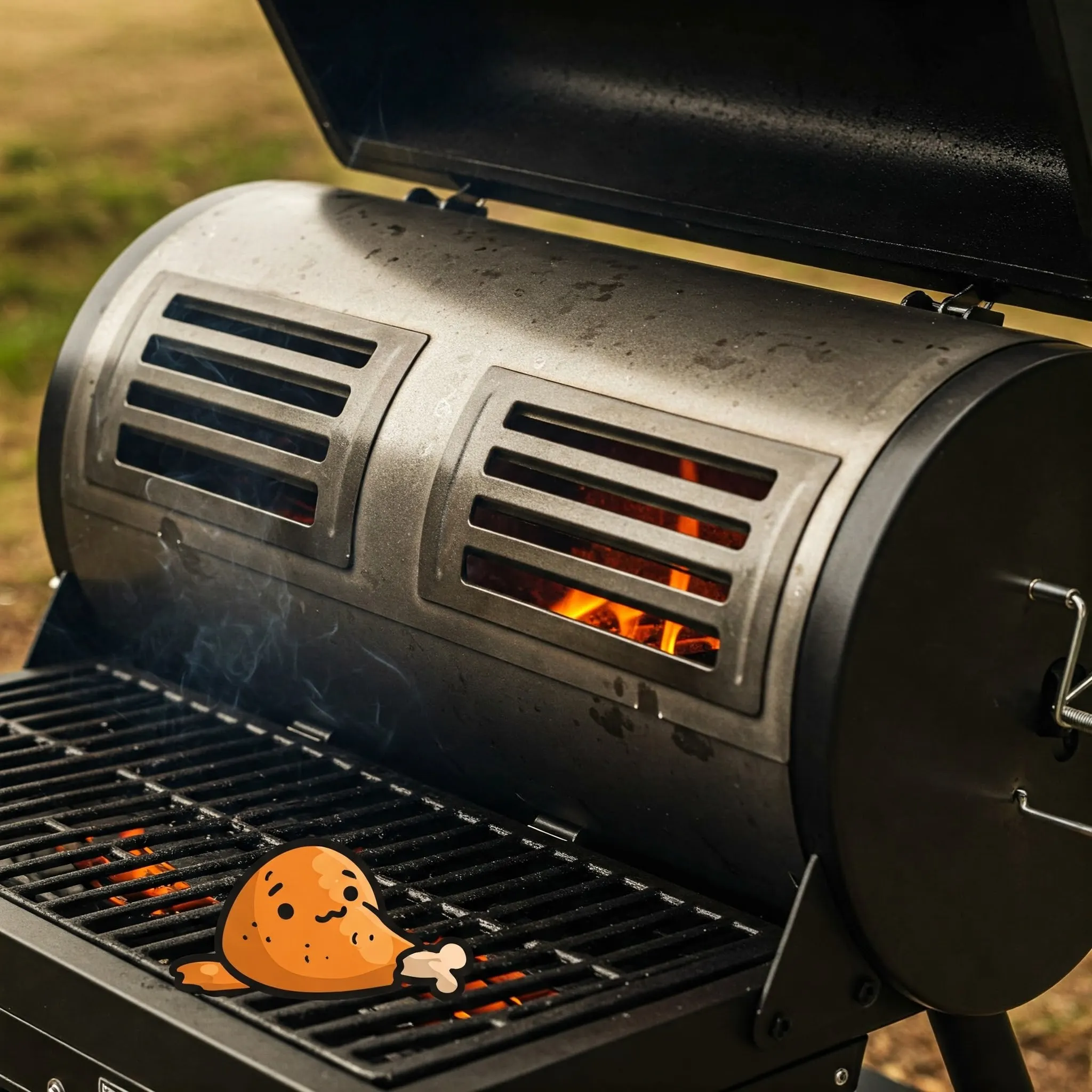
The original version of the PK Grill & Smoker that we tested impressed us with several aspects of its design and performance. Its thick cast-aluminum body excels at holding and reflecting heat efficiently, and it feels exceptionally sturdy and is inherently rustproof, a significant advantage over steel kettles in the long run. The shallow, rectangular shape of the PK Grill keeps the coals closer to the grates, which can be beneficial for searing, and its flat base makes it more suitable for indirect grilling compared to sloped, round kettles. The PK Grill also features two vents each on the top and bottom, providing excellent control over airflow and heat output. We were also impressed by how easy it was to assemble, and the built-in cart and shelves (there is no cartless option for this model) would be a welcome addition to a patio that lacks a dedicated worktable.
Despite these positives, we encountered several traits on the PK Grill that we considered to be significant dealbreakers. Even before our cooking tests, we were concerned that the short distance between the grate and the top of the grill could lead to food falling off. Unfortunately, this concern was validated when one of our testers accidentally flicked a chicken wing onto the ground. The grill box of the PK Grill is also detachable, which seems convenient in theory for cleaning or transport, but in practice, it proved to be a liability. If the lid isn't raised and lowered just so, the grill box could slip out of its joint and either brush against your hand, posing a burn risk, or even fall off entirely. The PK Grill features only a single hinge on the grill grate, which makes it difficult to access all corners of the coal bed during cooking, especially compared to the Weber's and Napoleon's dual-hinged grates.
Furthermore, the PK Grill lacks an ash catcher, which means that anything stored on the handy bottom shelf inevitably gets covered in soot. Considering all of these concerns, particularly the safety risks and the lack of an ash catcher, it was difficult to justify the PK Grill's significantly higher cost, which is roughly double that of the Weber kettle.
====================================================================
Char-Griller Wrangler E2123: A Grill to Approach with Caution
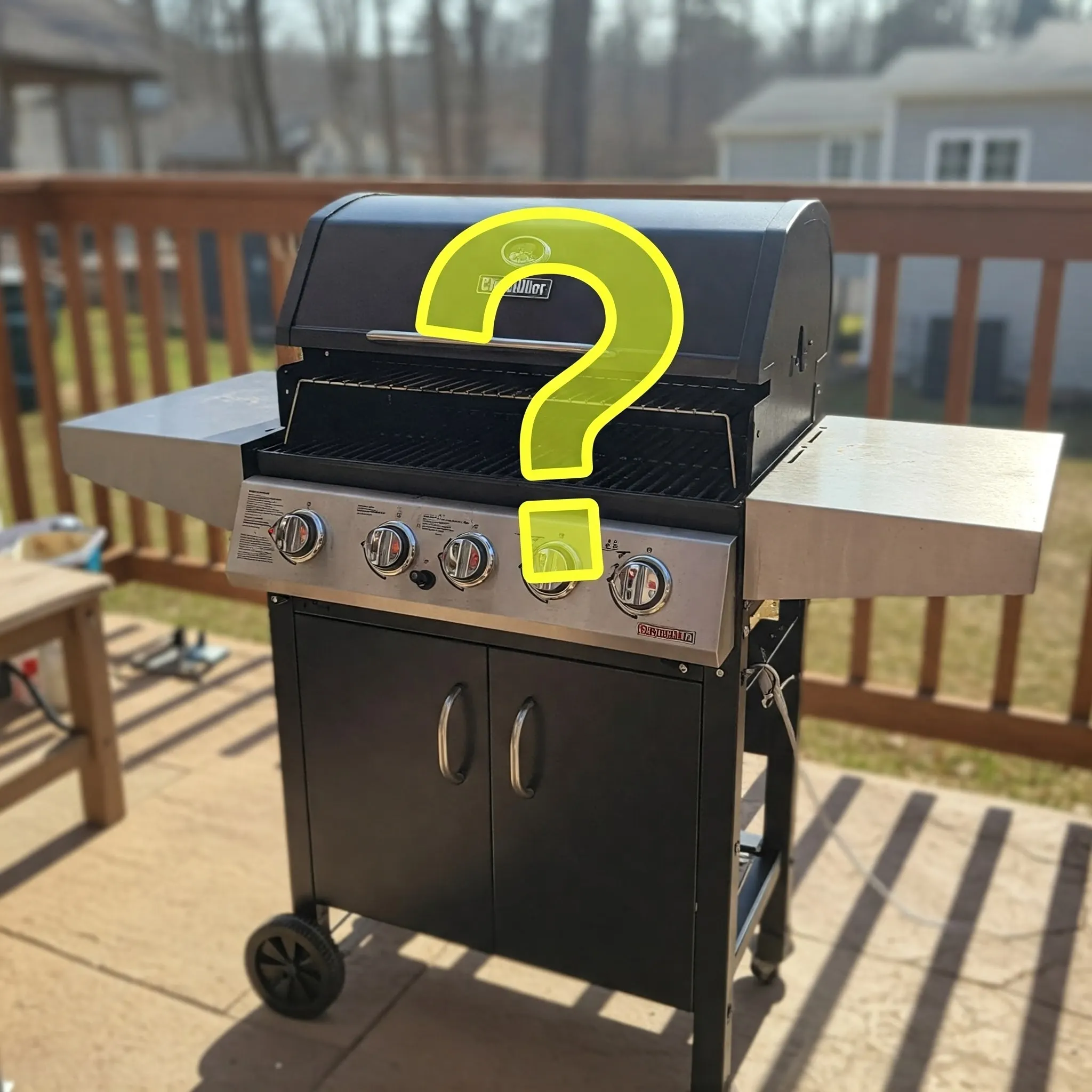
We briefly considered the Char-Griller Wrangler E2123 as a budget-friendly option. However, our research led us to a positive (and yet concerning) Amazon review that listed potential issues such as the grill catching on fire, leaving grease stains on decks or porches, and components coming loose. These reported issues raised significant concerns about the grill's safety and durability, leading us to exclude it from our primary testing.
====================================================================
Sources: Our Commitment to Thorough and Reliable Testing
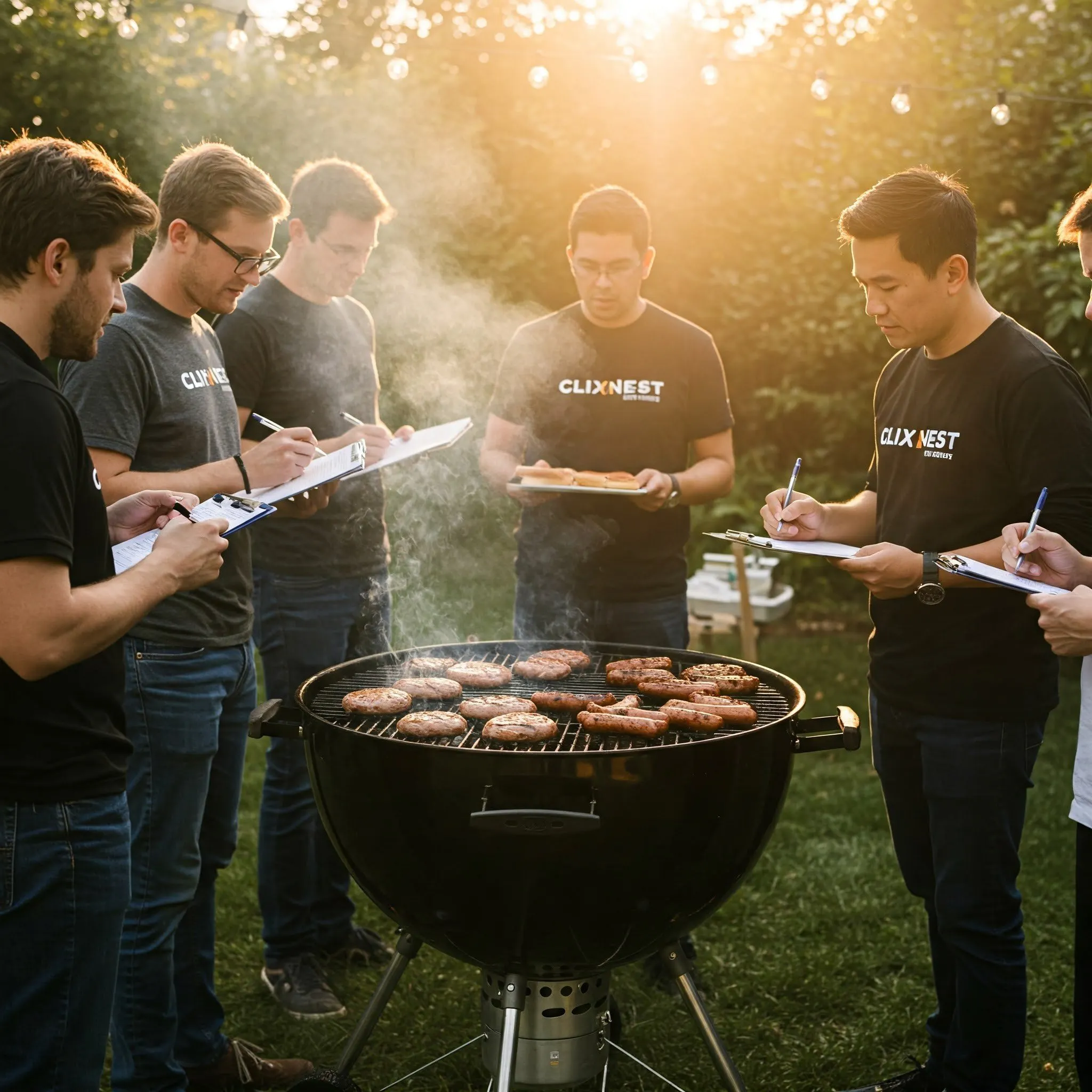
The findings and recommendations presented in this article are the result of rigorous testing and evaluation conducted by the experienced team at ClixNest. Our testing was spearheaded by a ClixNest staff writer with over a decade of professional culinary experience, including extensive time spent grilling in restaurant kitchens. This expertise was complemented by the contributions of other ClixNest staff members who participated in the testing process. Furthermore, we consulted with numerous grill masters, industry experts, and grilling enthusiasts to gather additional insights and perspectives. Our commitment to providing you with the most accurate and reliable information is paramount, and our testing methodology reflects this dedication to thoroughness and real-world evaluation.
====================================================================
Final Thoughts: Choosing the Right Charcoal Grill for Your Needs
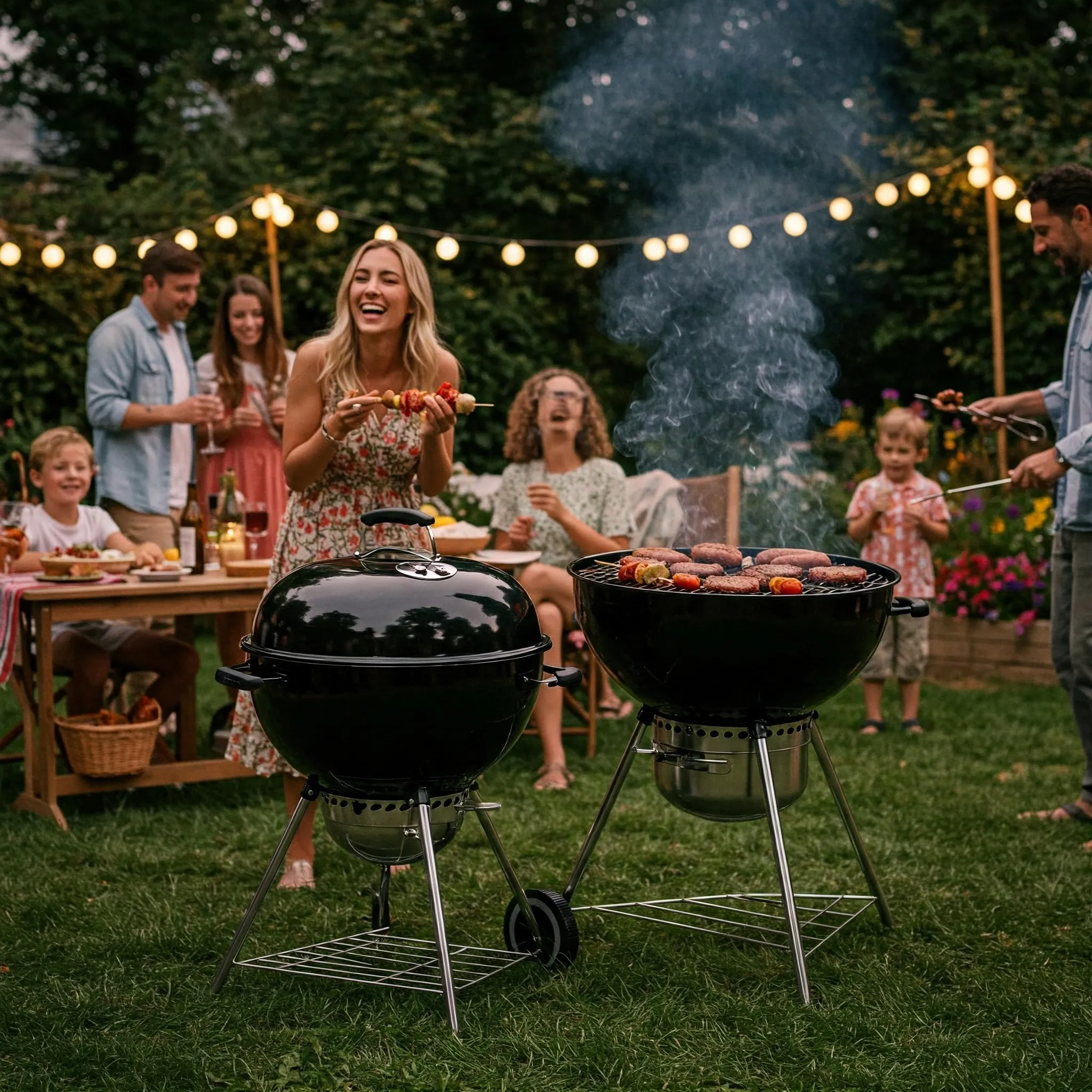
Ultimately, when it comes to choosing the best charcoal grill, the Weber Original Kettle Premium Charcoal Grill 22″ stands out as the clear winner for most grilling enthusiasts. Its exceptional performance across a range of cooking tasks, combined with its user-friendly design, durable construction, and unbeatable value, make it our top recommendation. While the Napoleon Rodeo Charcoal Kettle Grill offers a taller cooking surface and good overall performance, its complex assembly and higher price point make it a less compelling option compared to the Weber. The PK Grill & Smoker, with its unique design and excellent heat retention, has its merits, but the safety concerns, inconvenient features, and significantly higher cost make it difficult to recommend over the Weber for most users. As for the Char-Griller Wrangler E2123, the reported issues raise red flags regarding its safety and reliability.
Choosing the right charcoal grill is a matter of balancing performance, features, durability, and budget. The Weber Original Kettle Premium Charcoal Grill 22″ strikes this balance perfectly, offering an exceptional grilling experience without breaking the bank. Whether you're a seasoned grilling pro or just starting your charcoal journey, the Weber kettle is a reliable and versatile grill that will deliver delicious, smoky results for years to come. Embrace the art of charcoal grilling and elevate your outdoor cooking with a grill that has earned its place as a true classic.
====================================================================
Key Takeaways: Your Quick Guide to the Best Charcoal Grills
- The Weber Original Kettle Premium Charcoal Grill 22″ excels in performance, ease of use, and value, making it our top pick.
- The Napoleon Rodeo Charcoal Kettle Grill offers a taller cooking surface but has assembly issues and a higher price.
- The PK Grill & Smoker boasts a unique and durable design but comes with safety and convenience concerns at a significantly higher cost.
- The Char-Griller Wrangler E2123 has potential reliability issues based on user reviews.
- Trust ClixNest for unbiased and expert grilling recommendations based on rigorous testing.








